Designer Tips for Choosing Toilet Tiles
When choosing finishing materials, designers take into account the area of the toilet, the height of the ceilings, and the lighting scheme.
- For a narrow toilet, rectangular tiles with a horizontal layout are suitable.
- To visually raise the ceiling, it is better to use vertical laying of tiles.
- A small toilet in a Khrushchev or Brezhnevka will seem larger if the walls and floor are laid out with light-colored tiles. The diagonal orientation of the finishing elements also expands the space.
- IN combined bathroom you can zone the hygienic areas with tiles in contrasting colors.
- The design of the toilet should match the overall design of the apartment or house.
In the photo on the left, the walls of the toilet are lined with white "hog" up to the middle, the other half is painted lilac.
Pros and cons
Tiles lead the way among other finishing materials for bathrooms and toilets due to their aesthetic value and durability.
| Benefits | disadvantages |
|---|---|
| A large assortment of tiles and porcelain stoneware of different price categories, shapes, designs is presented on the market. | Tiling is a laborious process that requires skill. In case of poor-quality work, ceramic cladding can go in "waves". |
| When finishing with tiles, the level of the floor and walls is leveled. | Over time, mold and mildew may appear at the joints of the elements. |
| Ceramics are easy to clean and retain their bright color and gloss for years. | Tiling will make the walls 1-1.5 cm thicker, which will reduce the area of the bathroom. |
Types of tiles
There are three main types of tiles.
- Ceramic (tiles). Tiles are slabs of fired clay coated with white or colored glaze. It is moisture resistant, has a porcelain luster, and is available in price categories from luxury to economy. The disadvantages include susceptibility to cracking.
- Porcelain stoneware. Porcelain stoneware is a durable composite material that imitates the color and texture of natural stone or wood. In its production, white clay, feldspar, sand and mineral dyes are mixed. Firing of porcelain stoneware takes place at a temperature of 1300 degrees. Porcelain stoneware does not absorb moisture and is highly resistant to abrasion and impact. For bathrooms, it is better to choose porcelain stoneware with an anti-slip coating.
- Quartz vinyl. Quartzvinyl is a premium finishing material. This material combines the durability of natural stone and the plasticity of linoleum. The line of quartz vinyl contains decors that copy the surface and pattern of natural materials.
In the photo on the left, the walls of the toilet of a laconic design are lined with ceramics, the installation hatch and the border divide the diagonal and horizontal layout. In the photo on the right, the design of the bathroom is made in a minimalist style with porcelain stoneware cladding like polished marble.
Toilet location
For the bathroom floor, it is recommended to choose porcelain stoneware or quartz vinyl, the best solution for the walls would be the same porcelain stoneware and tiles. One of the trendy design trends is the use of flooring materials for wall decor. The floor covering can "rise" upwards, uniting the space into a single whole.
Floor
The toilet floor should not be afraid of water, be easy to clean, and should not slip under your feet.
- A staggered arrangement of elements is considered a classic layout for the floor.
- For a toilet and a bathroom in eco-style, textured porcelain stoneware under a tree or pebble is suitable.
- For narrow or small toilet it is not recommended to use a docking plinth, as it will reduce the floor area.
The photo on the left shows a colorful design of the toilet. The floor is tiled in black and white, the walls are tiled with orange mosaics.
Walls
Correctly selected tiles make the toilet look larger and brighter. If there is a bathtub in the bathroom, then the lining must withstand the impact of a jet of water. One of the biggest problems in poorly ventilated toilets is mold and mildew. Tiles and porcelain stoneware are resistant to microorganisms, and antifungal grout should be used for the joints.
In the photo there is a modern style toilet with mosaics and ceramics with a plant print.
Niche
The niche above the toilet can be not only a shelf for hygiene items, but also a decorative element. Ceramic cladding will not interfere with the installation of the backlight, which will visually make the niche deeper and give the glossy surface a shine. Another way to highlight the niche against the background of the wall is to use tiles or porcelain stoneware in contrasting colors.
In the photo, the shelves are illuminated with spots, the back wall of the niche is faced with tiles with an exquisite oriental pattern.
Installation
The installation is a solid frame on which the toilet bowl and flush structure are attached. The frame is covered with a decorative panel or plaster box, which can be decorated with tiles.
Near the sink
The sink in the toilet provides additional convenience, especially if you have a hygienic shower.
In the photo on the right, a part of the wall near the sink is lined with multi-colored tiles with an ornament.
Photo tiles of different colors
For small rooms, you should choose a light monochromatic finish. If the area of the bathroom allows, then a combination of several colors can be used. On a light background, streaks and water stains are less noticeable than on a colored or dark background.
White
White tiles create a clean and spacious feeling in the toilet. The saturation of white changes from a warm milky hue to a cold one with a blue, so it can be entered into any interior range.
In the photo on the left, the toilet is finished in a modern style, in the photo on the right, the interior of the bathroom is made in a classic style, there is a hatch above the curb for access to communications.
Gray
The gray color ranges from light platinum to dark agate. Gray ceramics are organically combined with wood, stone, concrete texture. The noble restraint of gray shades is in great demand in such current design trends as scandi, loft, and industrial.
In the photo, the toilet is in a modern style, behind the urinal and toilet bowl, there is a box adapted for closing pipes.
Black
Black colors of finishing materials are typical for loft or art deco style. Black porcelain stoneware with a matte surface looks stylish and expensive.
Light green
The light green color adjusts to the positive, but the plain green walls will visually "eat up" the bathroom space.Designers recommend combining light green with white to add air to the interior and emphasize the freshness of greenery.
Beige
Beige tiles look beautiful with both glossy and matte surfaces. The combination of beige tiles in different shades and textures will add volume to the design of the bathroom, while maintaining the overall color scheme.
Red
Facing the bathroom with red tiles is a rather bold design decision. The combination of red with white or beige makes it easier to perceive bright colors in the interior. The combination of red and black in the finish creates an expressive, memorable design that will appeal to young people.
Brown
Manufacturers of porcelain stoneware and quartz vinyl are experimenting with brown, creating imitation of wood, granite, marble, onyx.
In the photo on the right is a retro-style toilet. The wood-effect wall tiles are harmoniously combined with the brown toilet lid.
Blue
The color blue resembles water, which is why it has always found a place in the decoration of bathrooms and toilets. Complex blue tones are now in vogue: the color of sea water, turquoise, ultramarine.
Yellow
Yellow creates a vibrant, life-affirming interior. Yellow tiles are often used by designers to create pop art finishes.
Combination of 2 or more colors
The variety of tile colors allows you to move away from the monochromatic finish of the toilet and create an original wall and floor decor. Usually, colored tiles are combined with neutral tones. The red and white wall cladding looks spectacular, black tiles will emphasize the brightness of the orange and yellow tiles. The classic duet of black and white is still relevant in design.
The photo on the left is a combination of white and emerald tiles in a classic design. Pictured on the right is a black and white toilet design, complete with modern graphic posters.
Shapes and sizes of tiles
Depending on the size, the tiles are divided into 4 types:
- mosaic in the form of a square or hexagon, the size of the side of the element is from 1 to 5 centimeters;
- small, the size of a square tile is from 6 * 6 cm to 20 * 20 cm, the length of a rectangular tile is no more than 30 cm;
- average, the size of a square tile is in the range of 30 * 30 cm, the length of a rectangular element is no more than 40 cm.
- a tile is considered large if one of its sides exceeds 40 cm.
Modern technologies have made available for mass production finishing ceramics of unusual shapes and sizes: honeycomb, semicircle, mosaic, rectangle or square with a wavy edge.
In the photo on the left, the convex tile with a rhombus imitates a carriage tie on the fabric.
Tile layout options
The horizontal layout of the rectangular tiles will make the toilet visually wider, and the vertical one - higher. If you use contrast grout, then this visual effect will be even stronger. The diagonal layout of square tiles looks beautiful, increasing the space. Contrasting horizontal or vertical stripes will add a decorative touch to monochrome finishes.
For bathrooms in a classic style, a two-level finish is used, the border between the lower and upper parts is drawn with a border. It is possible to combine several layout options in one room.
The photo shows a toilet in a modern style, the interior uses a mosaic panel, glossy ceramics and satin-finished porcelain stoneware.
In the photo on the right, the border line separates the brick-like tiles and the emerald paint.
Bathroom tile design
Long gone are the days when you could only choose from square tiles in blue or green. Today, photo printing, high-precision digital cutting, modern firing and glazing technologies are used to create an original design of finishing materials.
Mosaic
Small drawing changes the visual perception of space, therefore mosaic recommended for small spaces. Squares no more than 2 cm in size are mounted on a flexible mesh base.Mosaic elements are made of ceramics, natural stone, glass, mirror cloth. The finer the mosaic, the more complex the pattern is.
Under the tree
Wood, as a decorative element, is used in eco-style, Scandinavian design, nautical style. Decorating the toilet with natural wood will be impractical due to the high humidity in the room. Porcelain stoneware exactly copies the color and relief of natural wood, but is not afraid of moisture and detergents.
The photo shows the design of a toilet with porcelain stoneware imitating wood.
With a pattern or pattern
Patterned tiles have been used since ancient times, and with the advent of digital printing, the possibilities of using prints in design have become endless. More recently, 3D printing has appeared with the creation of convex details on the surface of a tile.
In the photo on the left, black and white tiles with the Lina Cavalieri print.
Marble
The use of marble in decoration has always been a sign of an expensive and high-status interior, but natural stone is several times more expensive than tiles or porcelain stoneware. Marble tiles are large in size to imitation of the texture of natural stone with characteristic divorces looked as natural as possible.
Manufacturers of tiles or porcelain stoneware offer tiles not only with brown or black, but also with blue, green, pink veins. The marbled finish will accentuate the size of the large toilet.
Boar
One of the recent trends is a rectangular "metro" or "hog" tile. The tile mimicking the exterior clinker tile was originally used for the London Underground.
There are two types of "hog": flat and with a chamfer, the most common size is 75 * 150 mm. Flat tiles are suitable for minimalism or classic interiors, a convex rectangle is used in Scandinavian, vintage designs or in lofts. The boar can be laid in a ladder, that is, in a ragged, offset, herringbone or horizontally without offset.
With inserts and decor
A mirror, spots, decorative panels can be mounted in a wall tiled with tiles. The photo below shows examples of a combination of ceramics with a mirror sheet.
Mirrored
Mirrored details in the design lend glamorous chic and visual depth to the interior. Mirror tiles can be glossy or matte and come in a variety of shades from silver to bronze.
Combined tiles
In the design of the toilet, there are interesting combinations of tiles with other finishing materials. Moisture-resistant wallpaper is used in the bathroom., decorative plaster, wood. For reasons of practicality, the lower level of the walls or the part of the room that is most susceptible to contamination is tiled.
For mosaics, a combination with plain wallpaper is suitable; large tiles can be supplemented with an original pattern on waterproof wallpaper or decorative plaster. Decorative plaster perfectly imitates both the relief of natural materials and brickwork.
The photo shows a combination of several finishing materials - hog tiles, wallpaper and wood.
Take a look a selection of ideas for bathroom tiles.
Photo of a toilet in various styles
Tile, as a finishing material, is not tied to any particular style. Due to the variety of shapes, colors, sizes, tiles, porcelain stoneware, quartz vinyl are considered versatile finishing materials for any design.
For a loft or minimalism, it is better to select large tiles for natural stone, for classics, medium-sized monochromatic ceramics with a border are suitable, for Scandinavian design they use a "hog", a Provence-style toilet can be revetted with antique tiles in combination with floral wallpaper... The design in oriental style will be decorated with mosaics with oriental patterns.
Photo gallery
Every year there are new designs of tiles, quartz-vinyl porcelain stoneware, which allow you to create original interiors.Despite the emergence of plastic materials, ceramic or quartz tiles remain the most suitable finish for toilets and bathrooms.

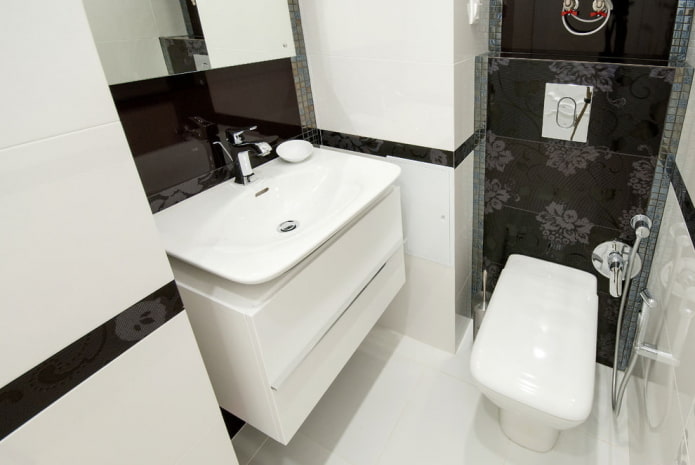
 10 practical tips for arranging a small kitchen in the country
10 practical tips for arranging a small kitchen in the country
 12 simple ideas for a small garden that will make it visually spacious
12 simple ideas for a small garden that will make it visually spacious
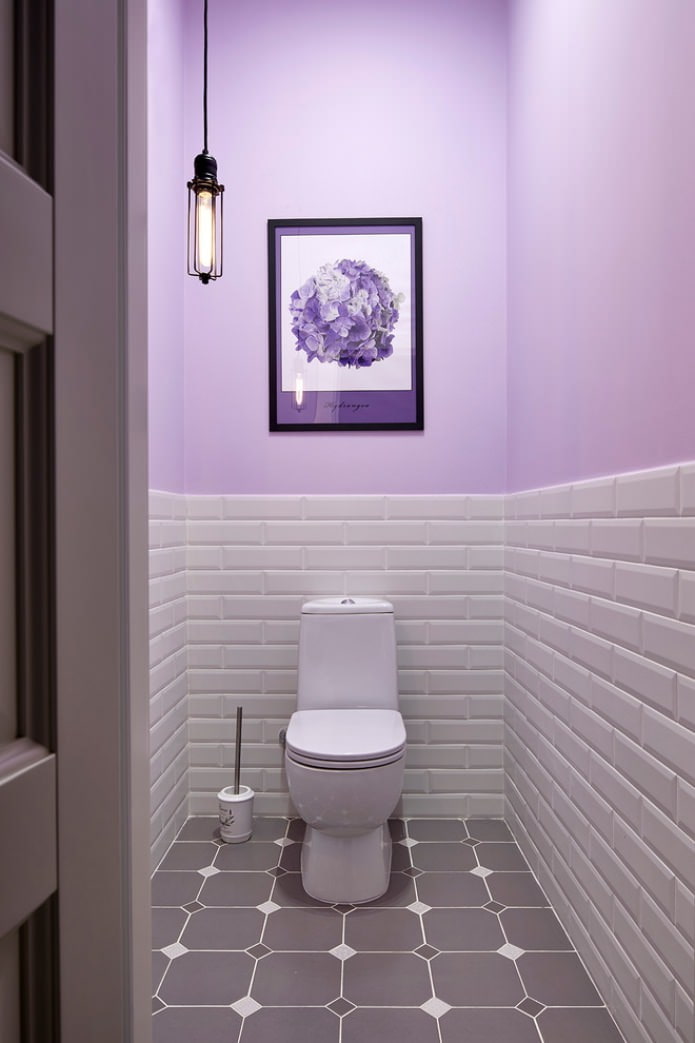
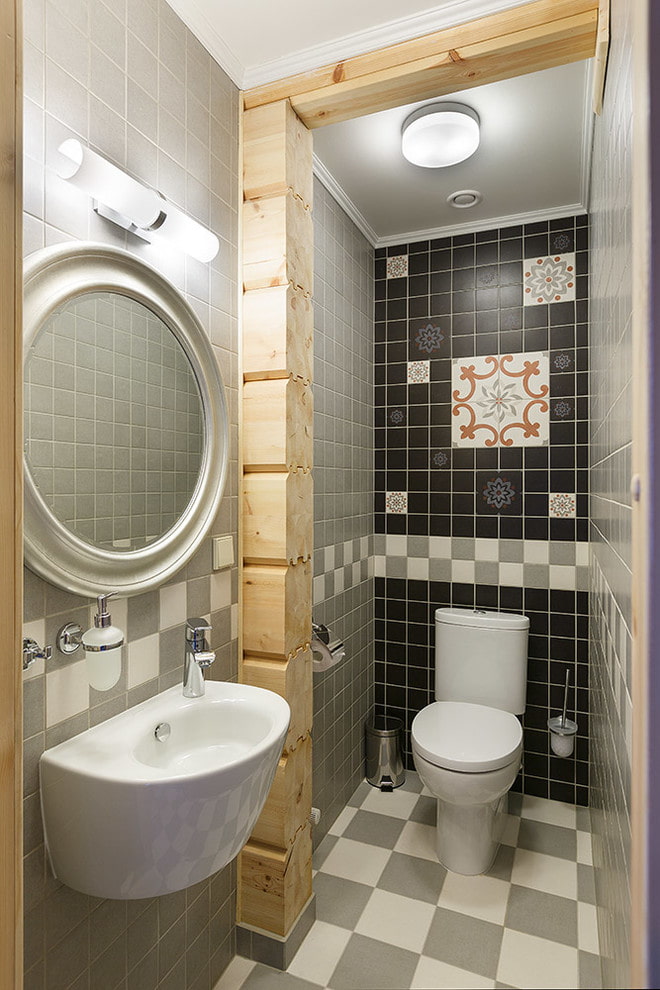

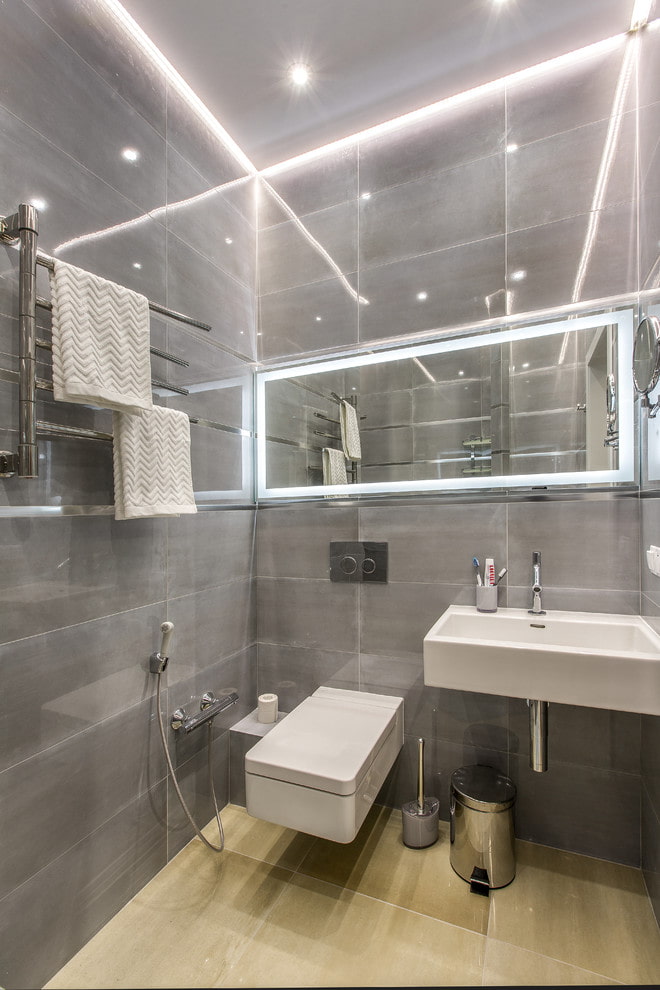
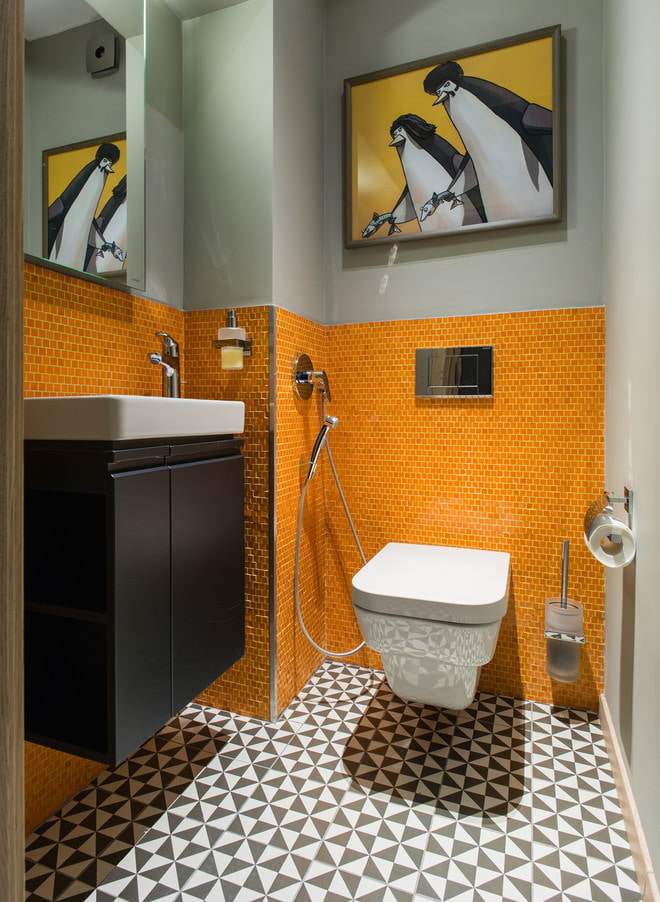
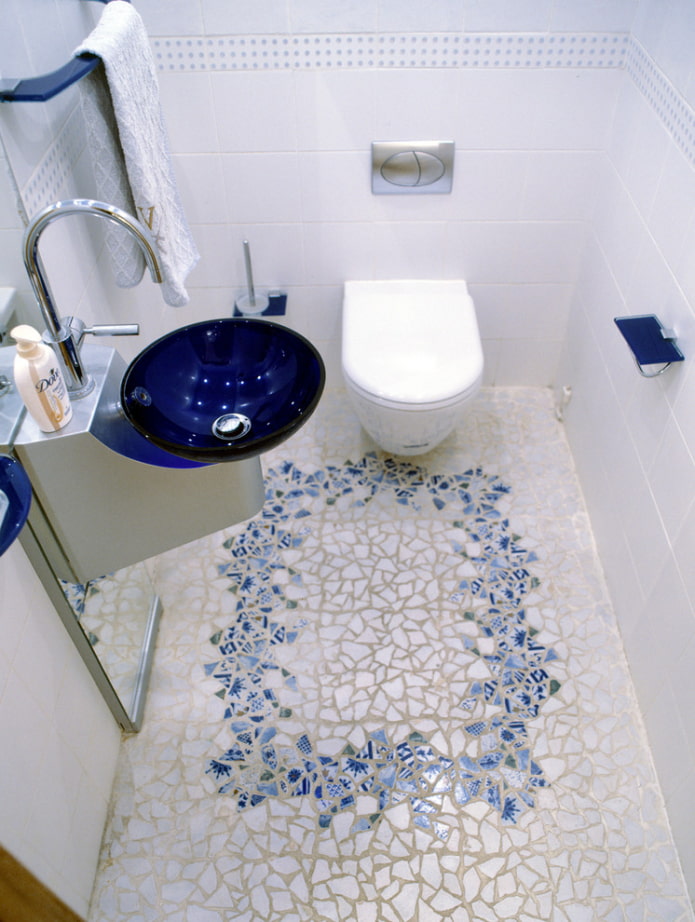
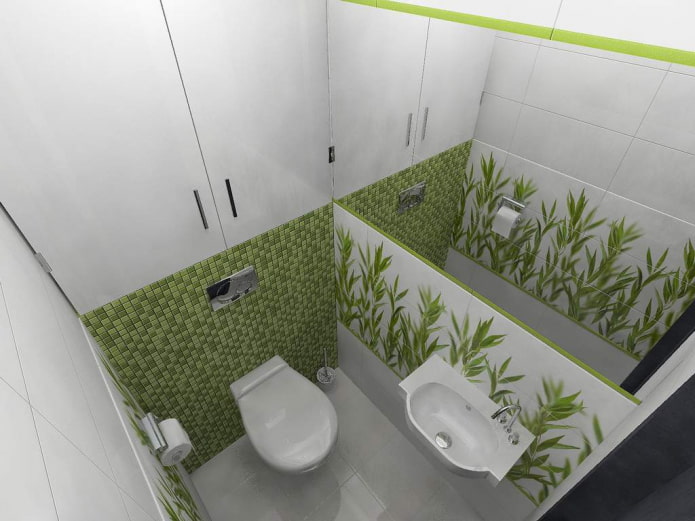
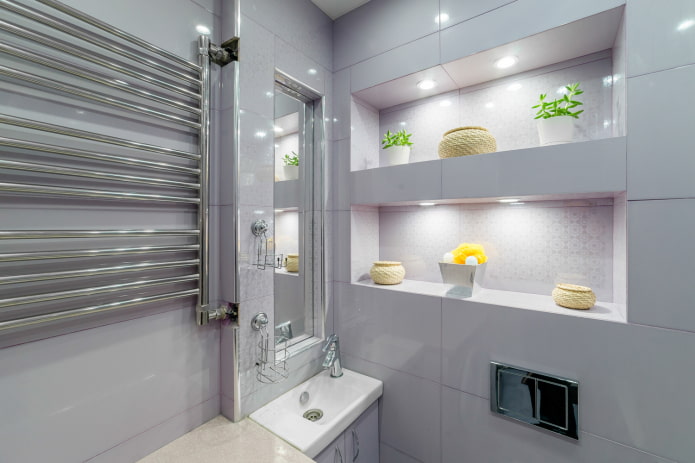
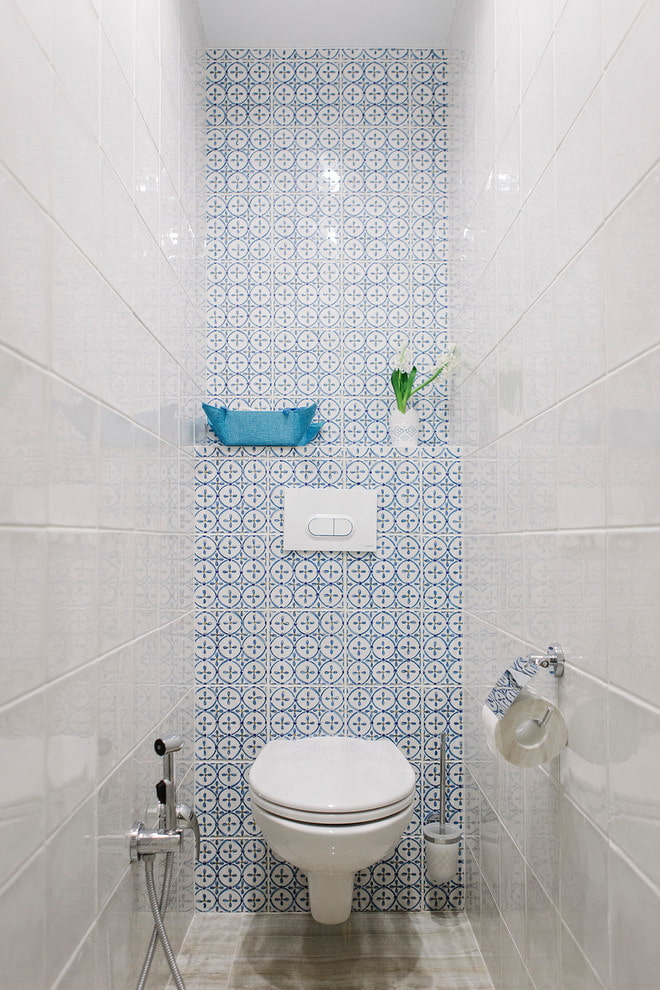
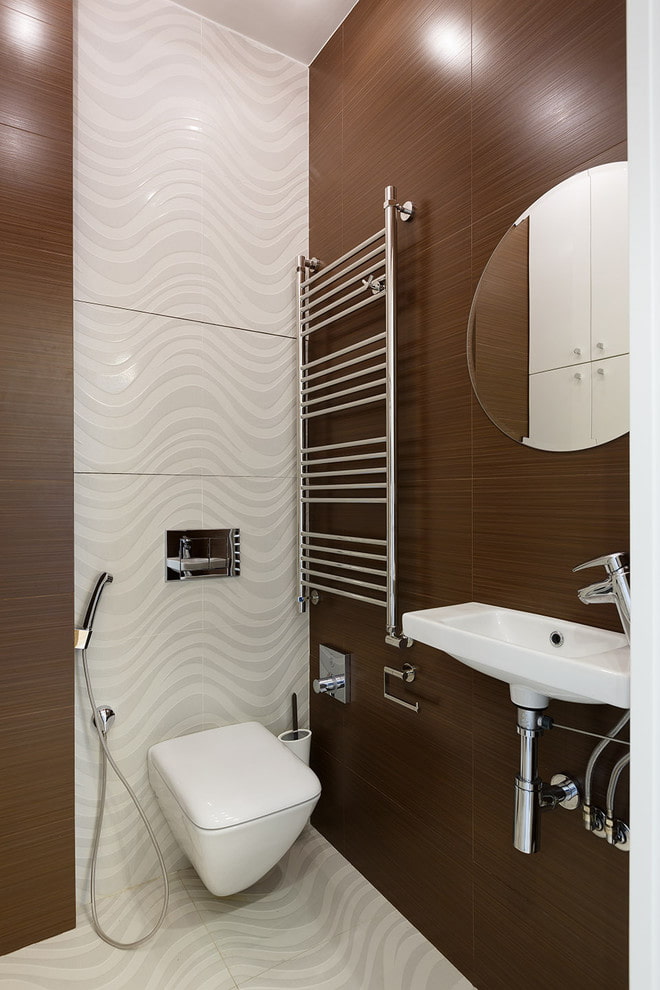
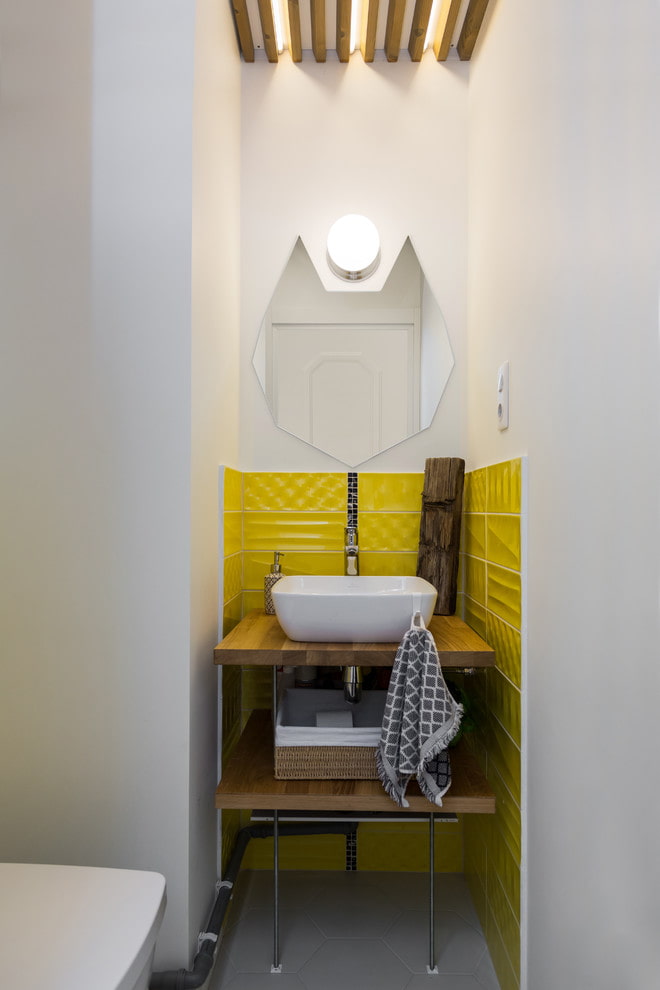
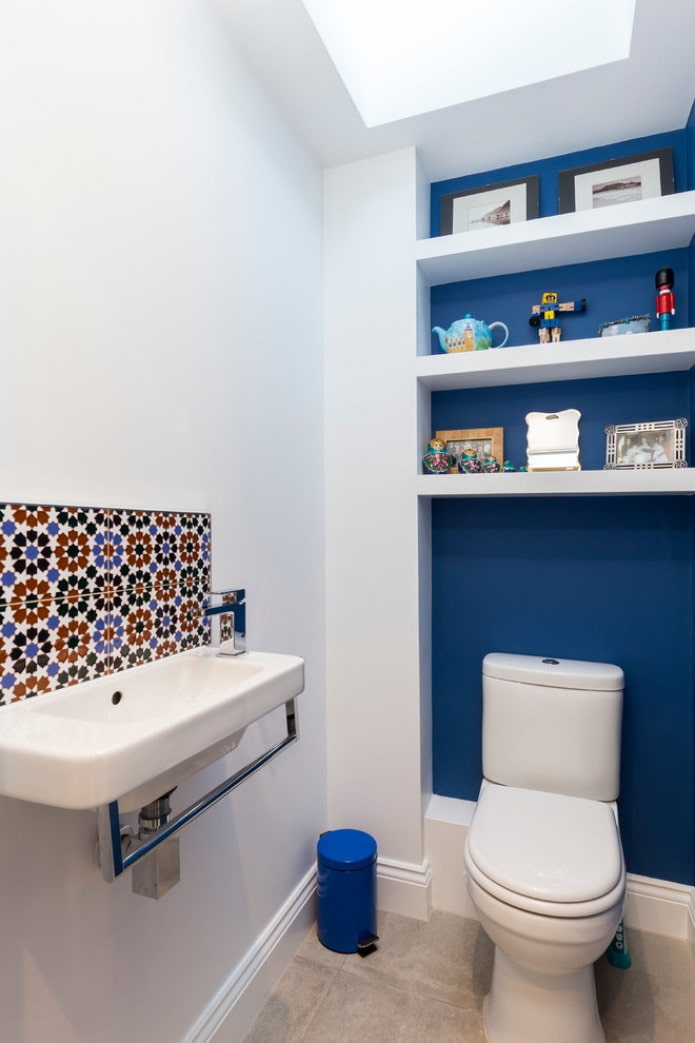
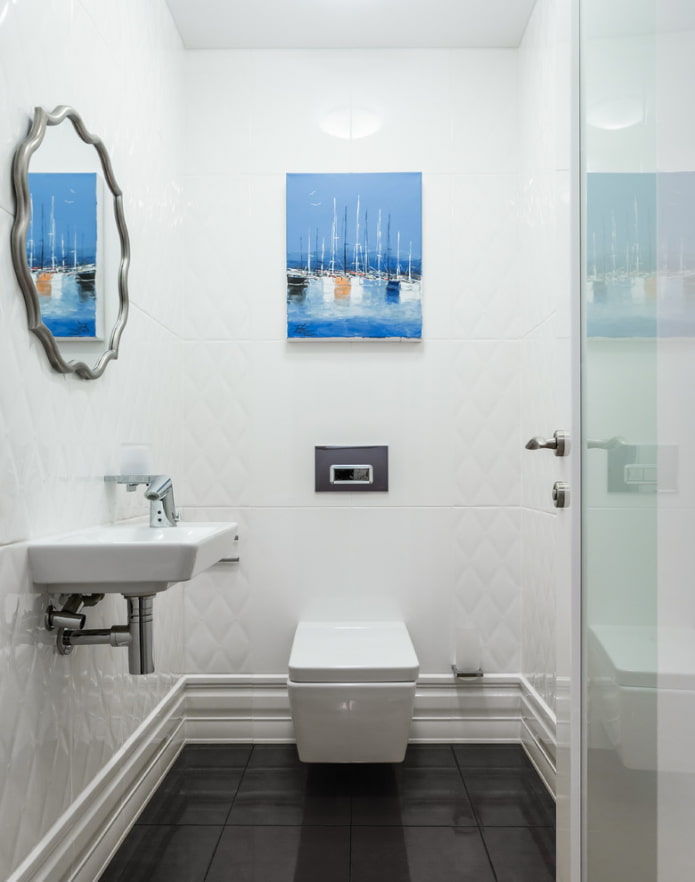
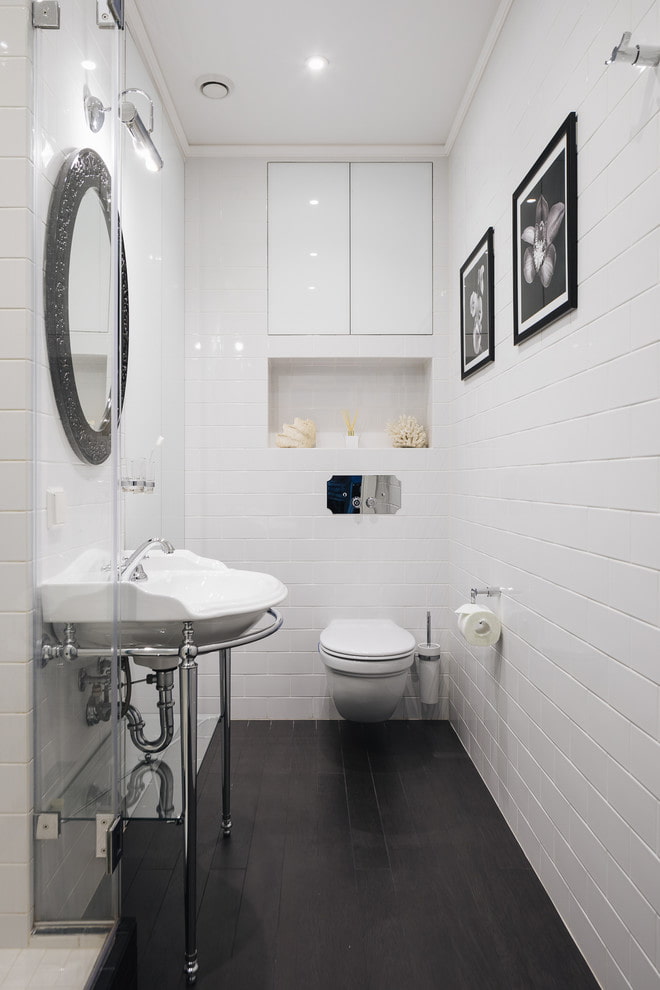
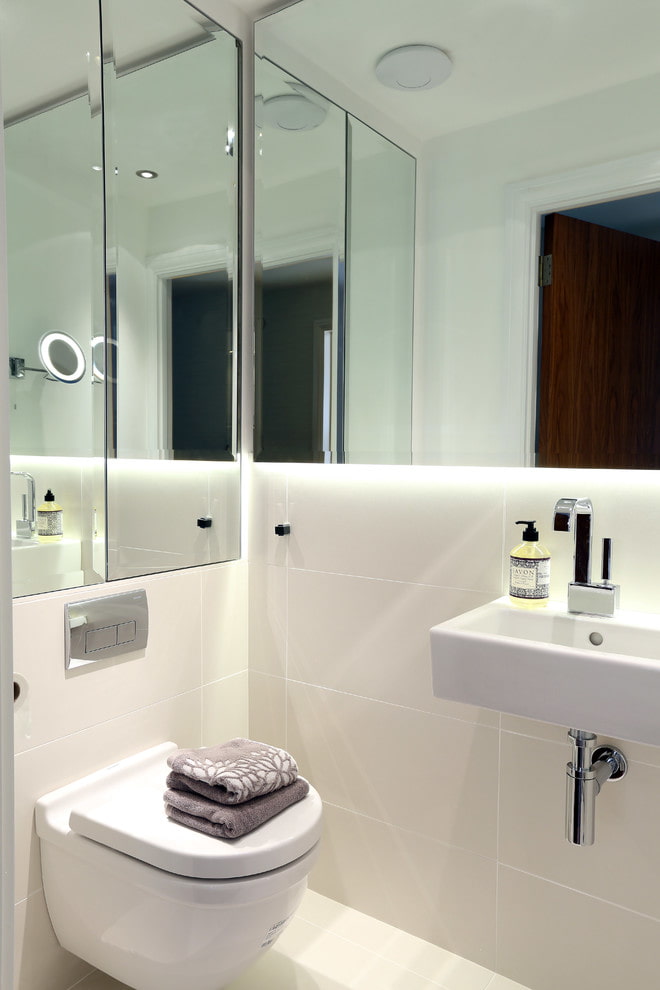

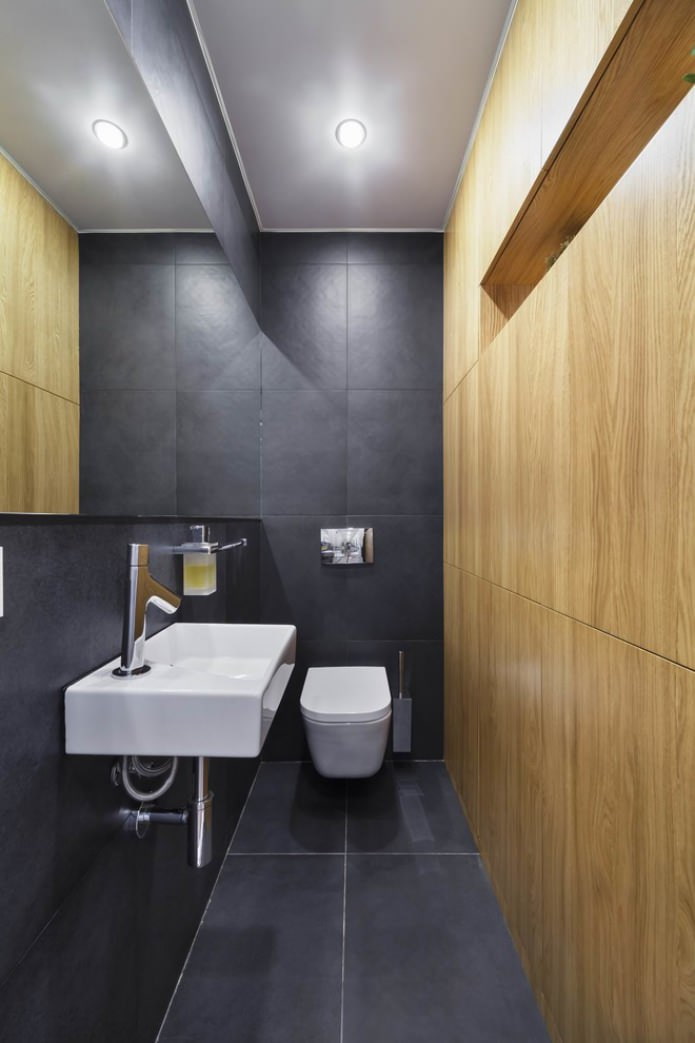
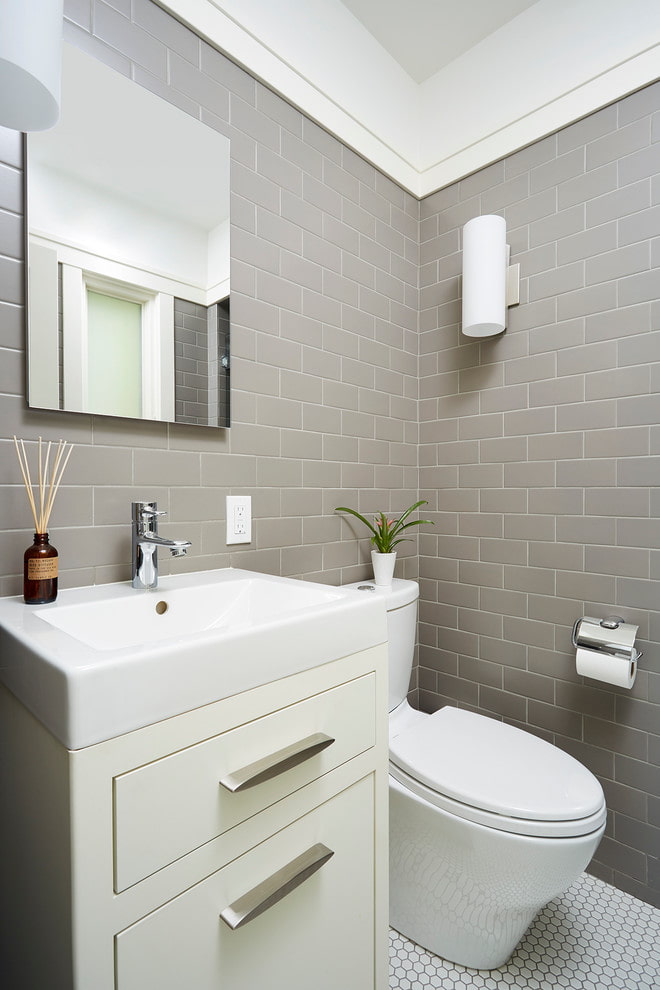
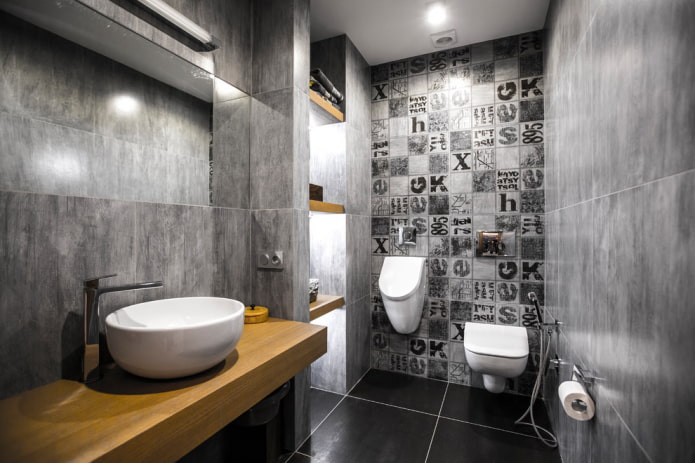

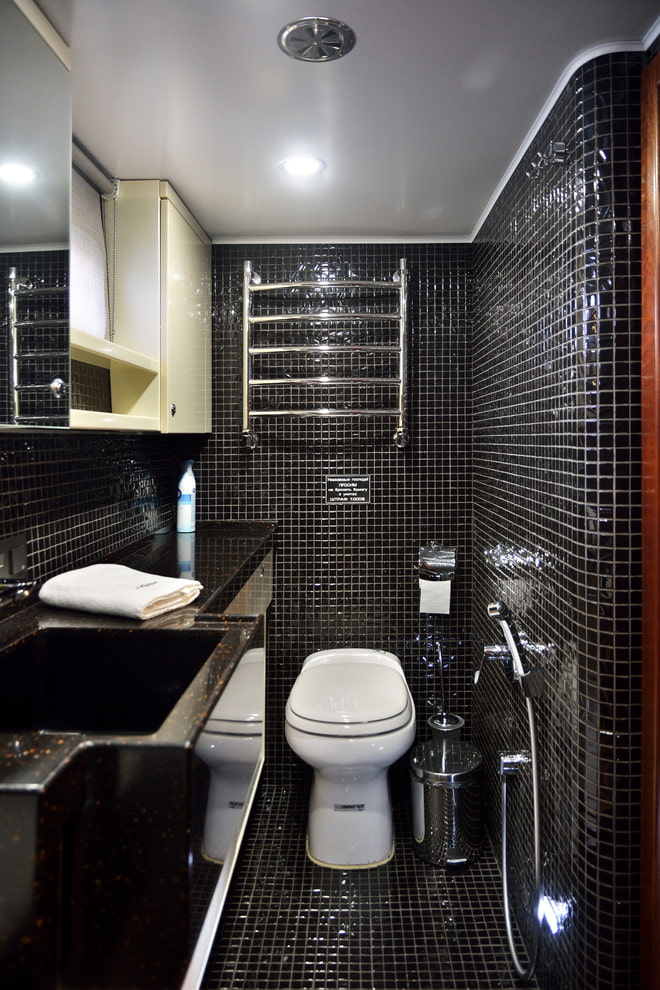
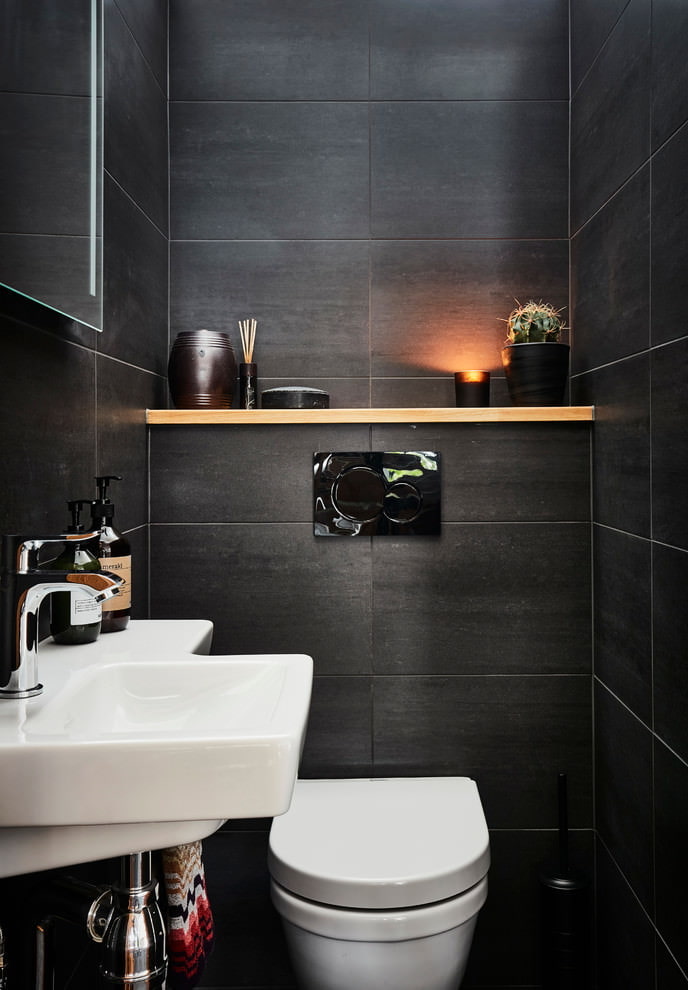

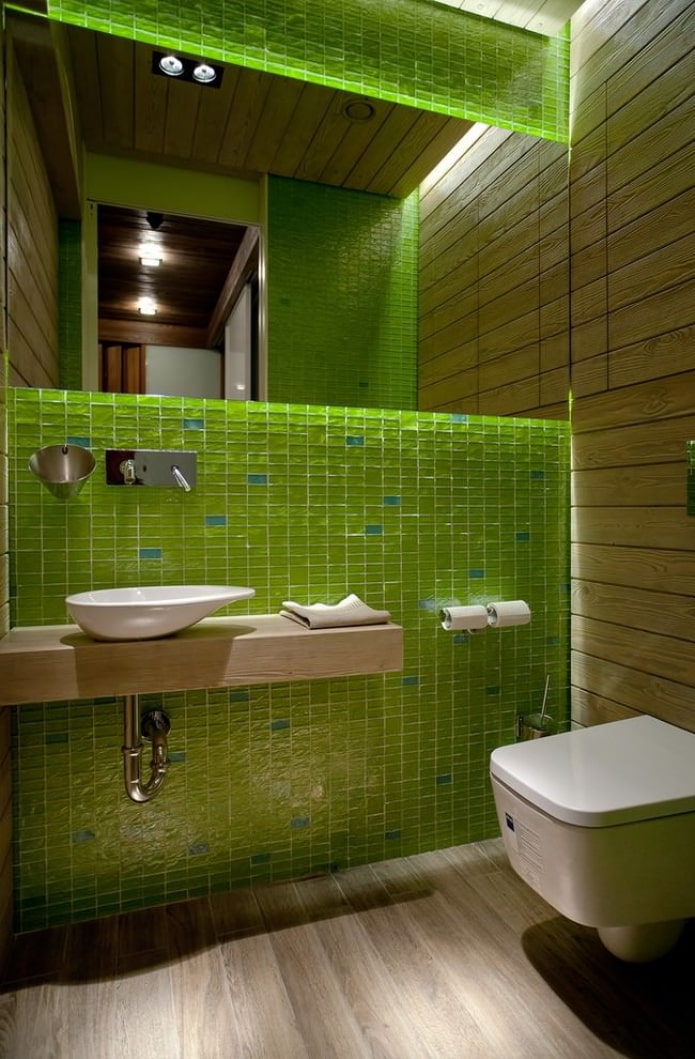

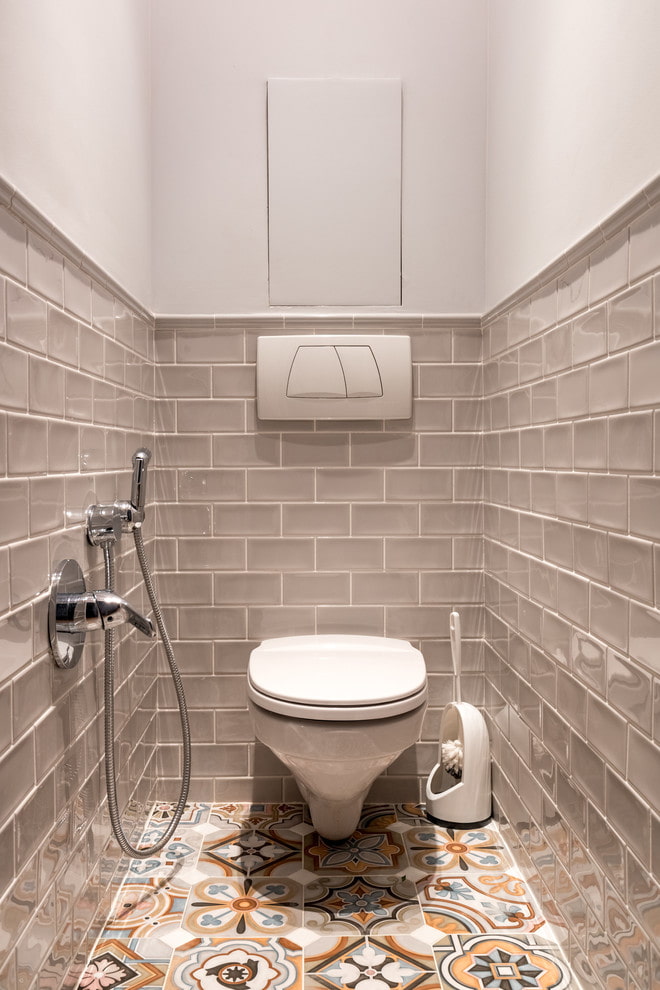
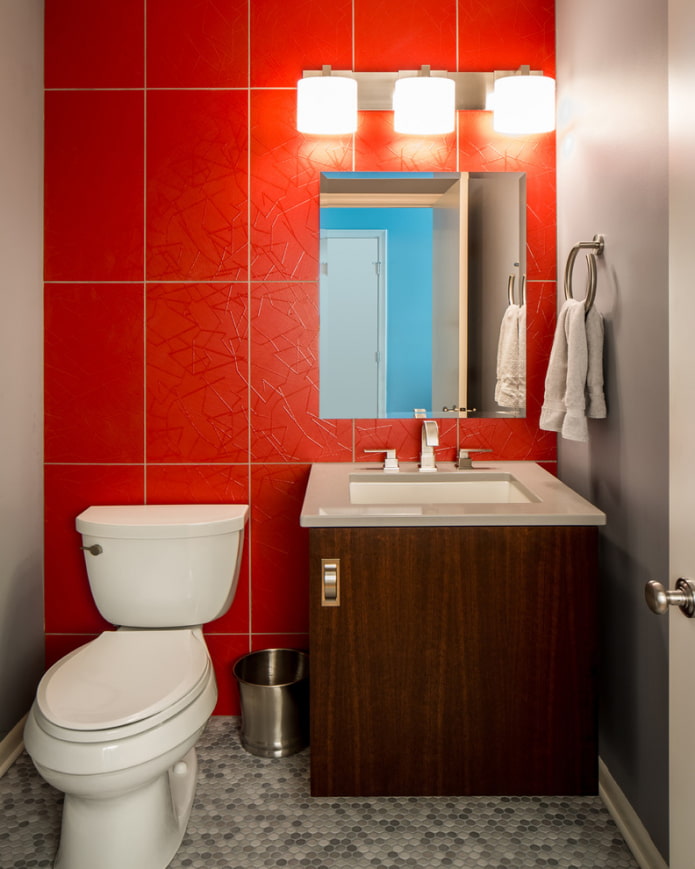
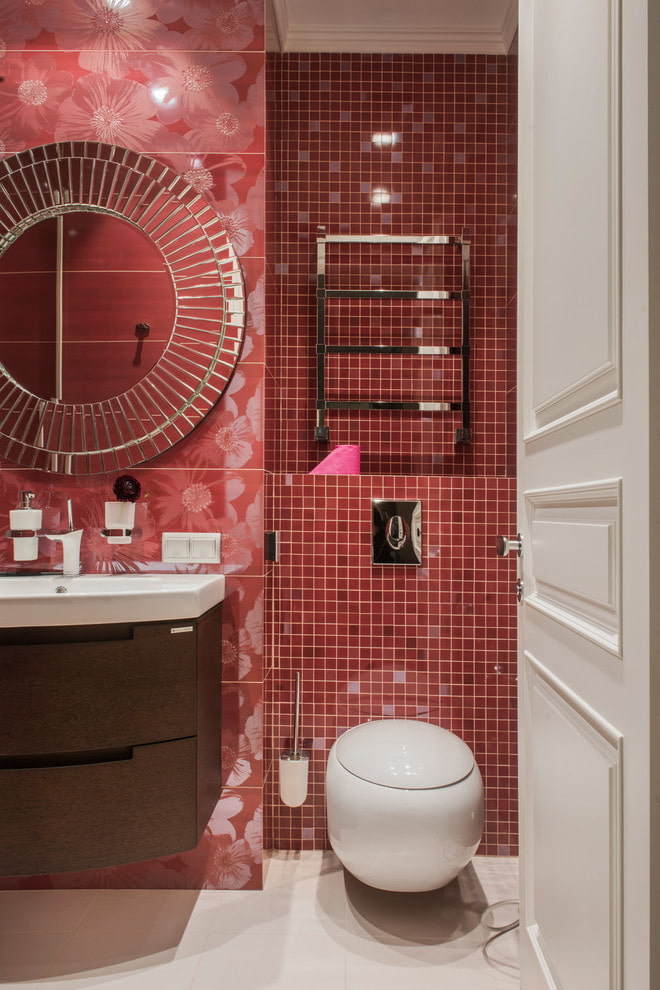
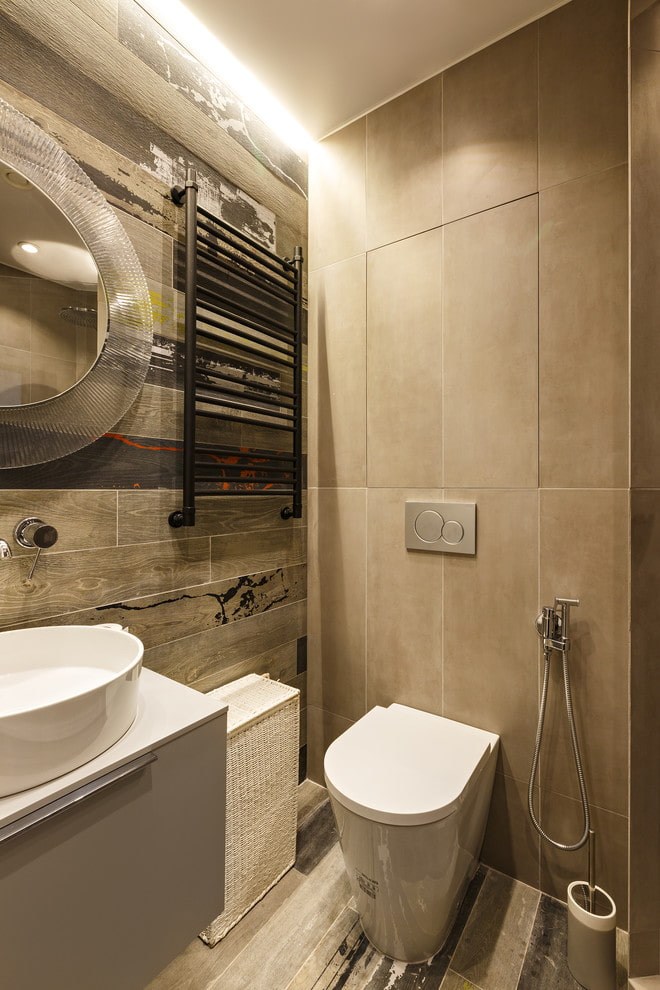
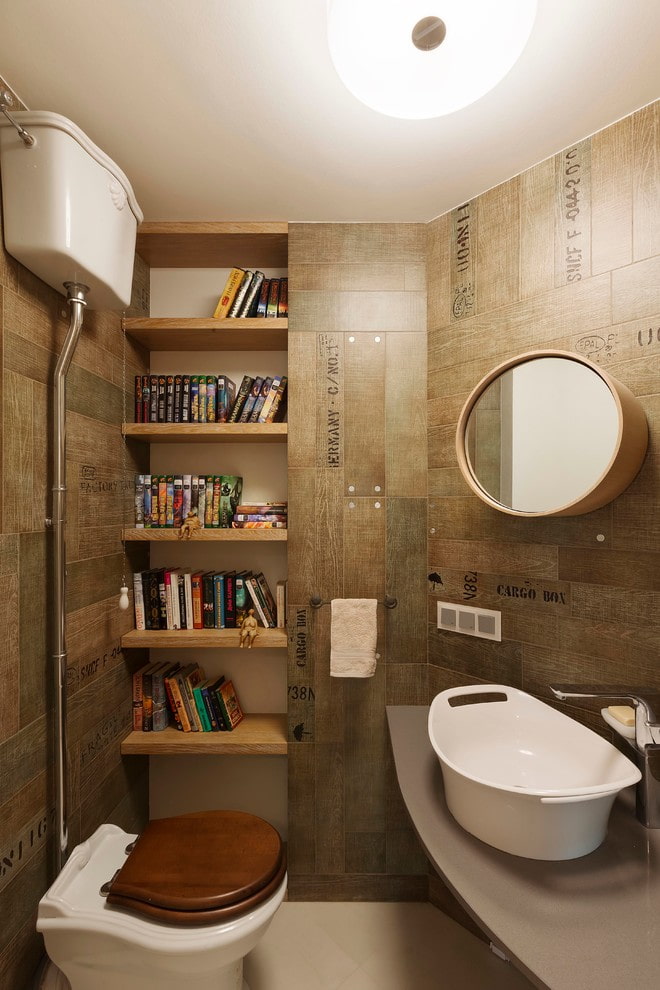
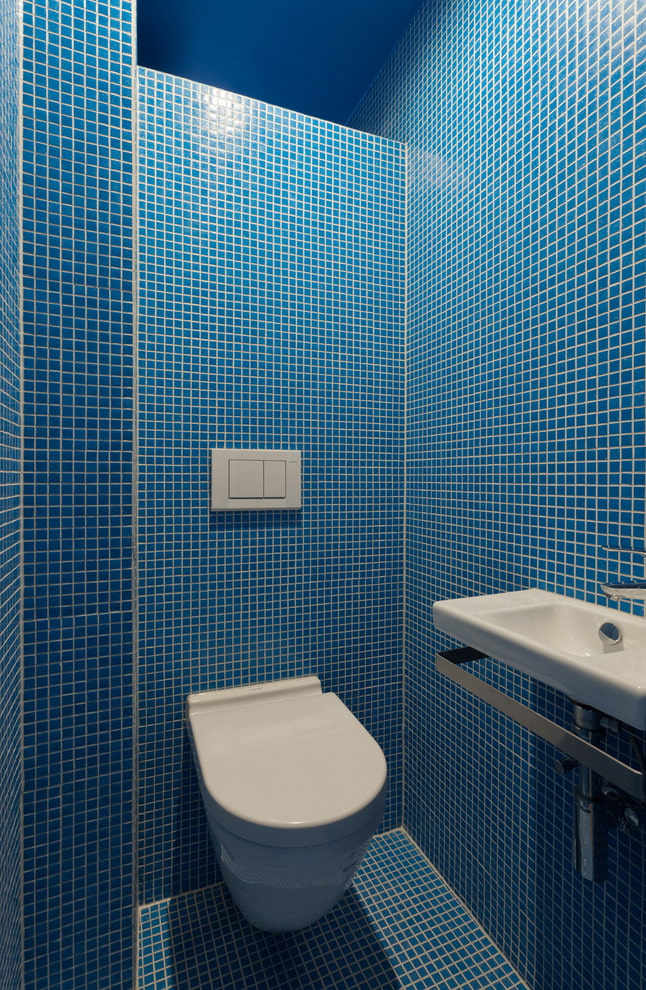

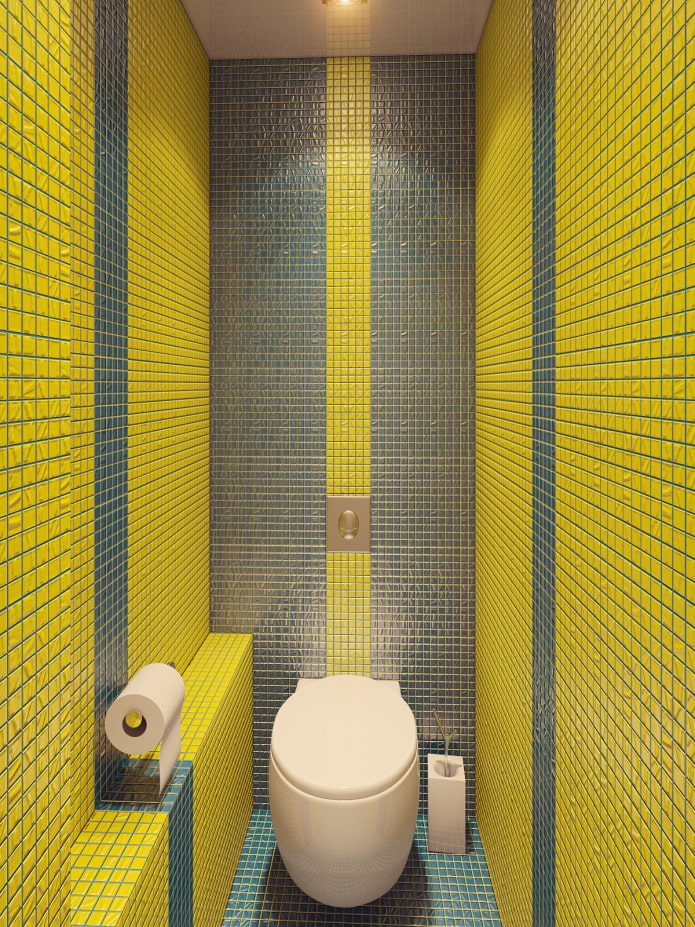
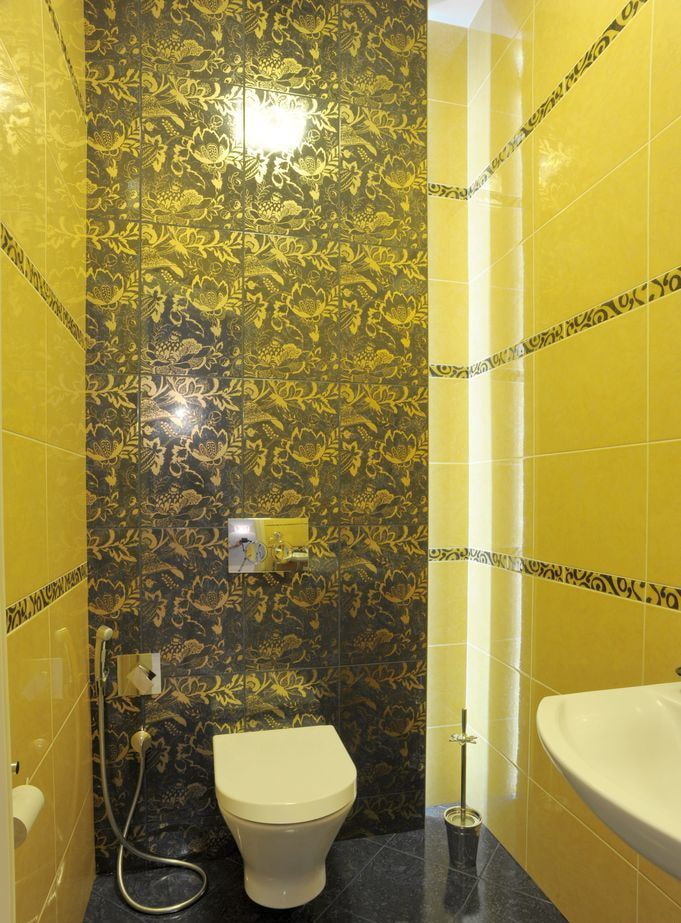

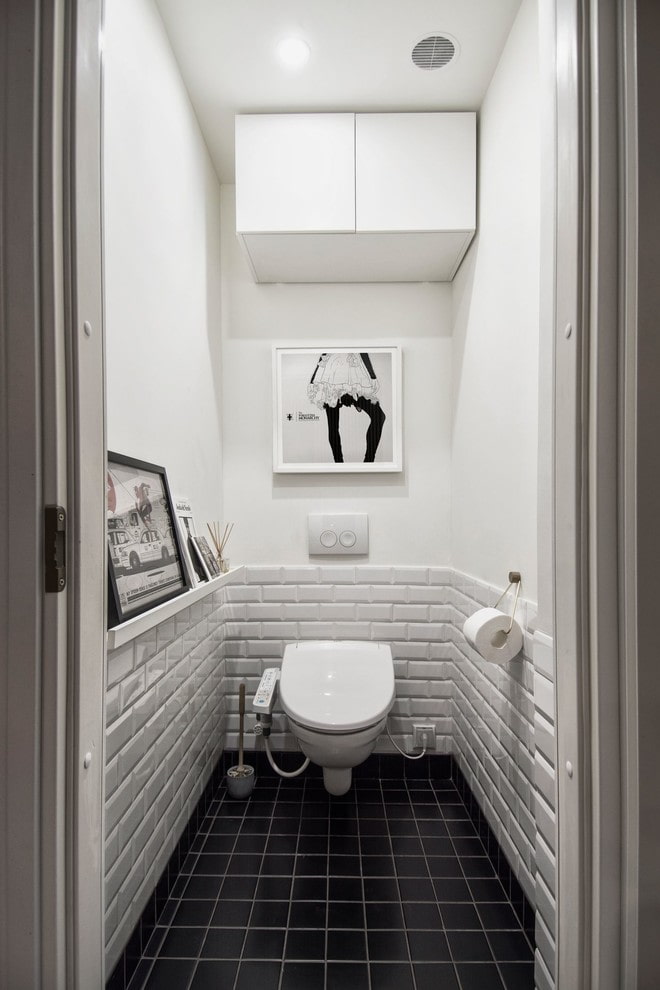



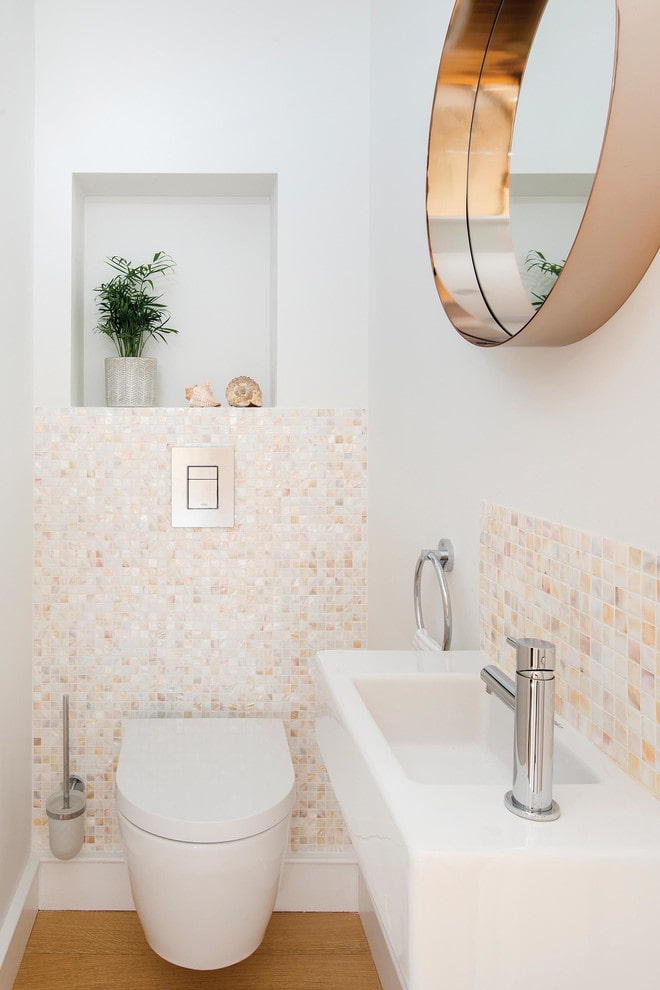
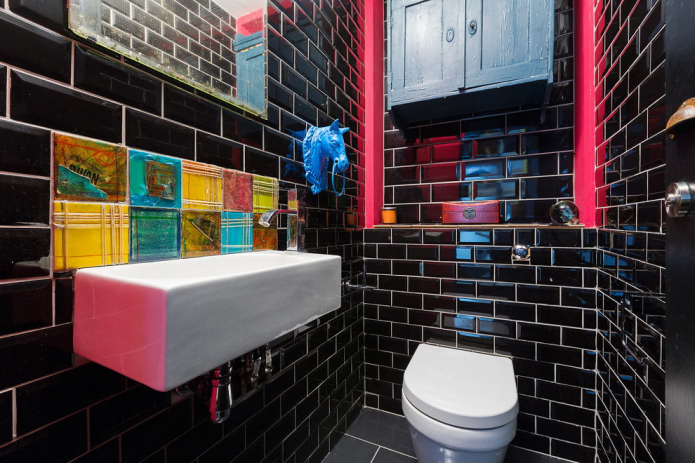
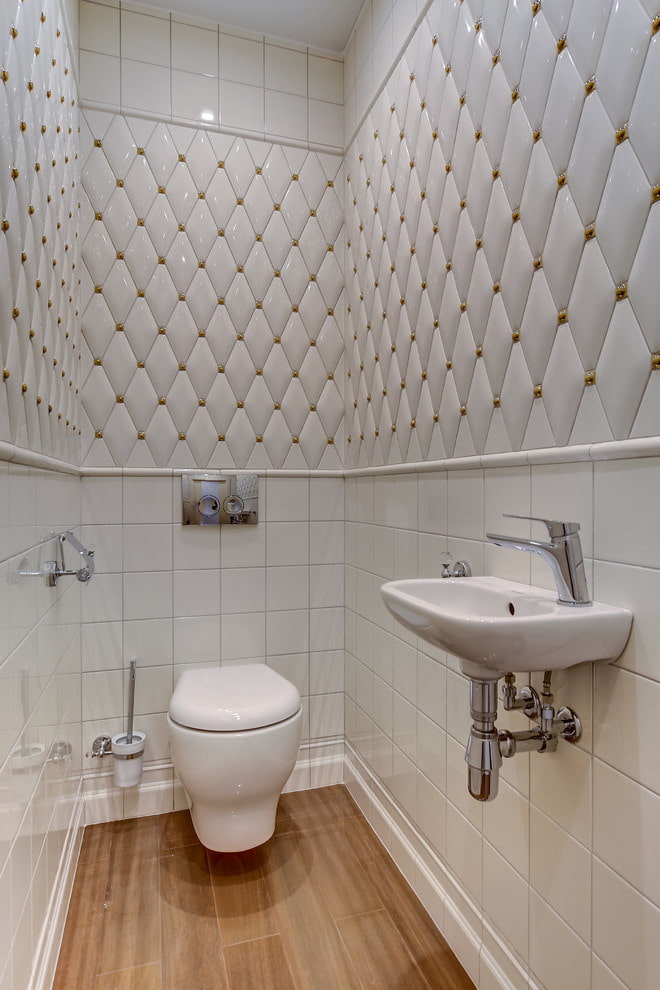
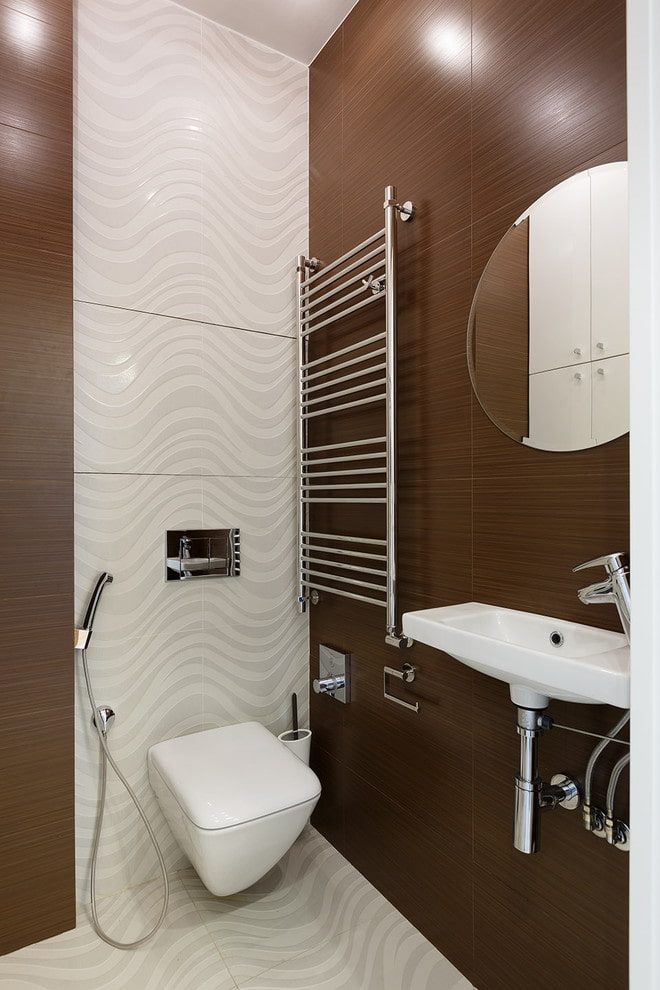
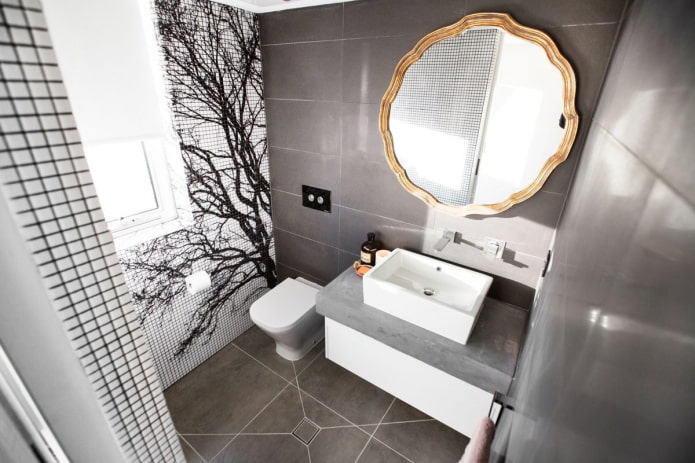

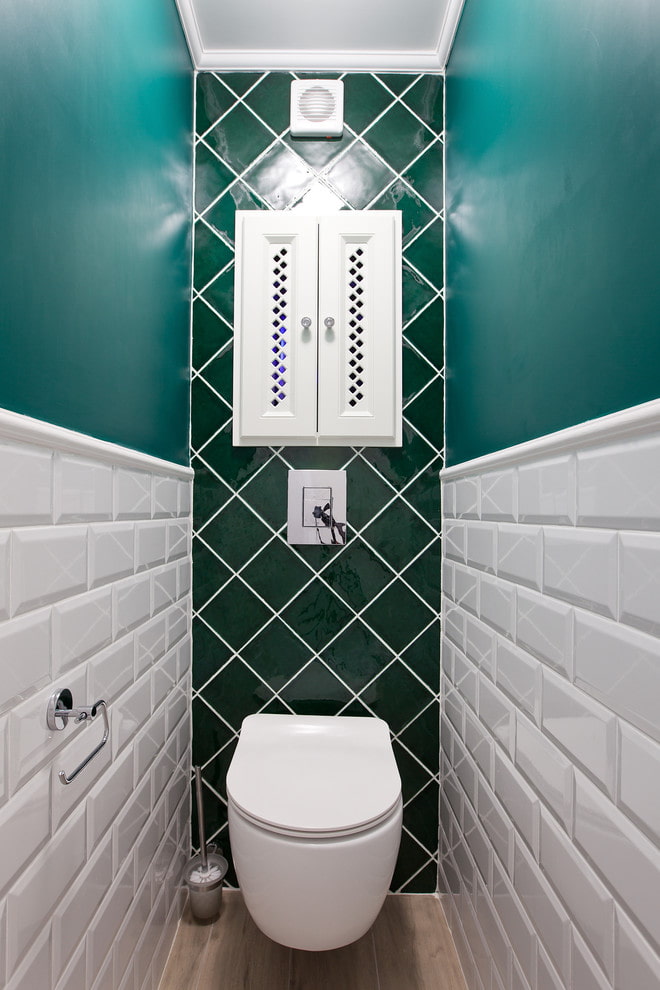
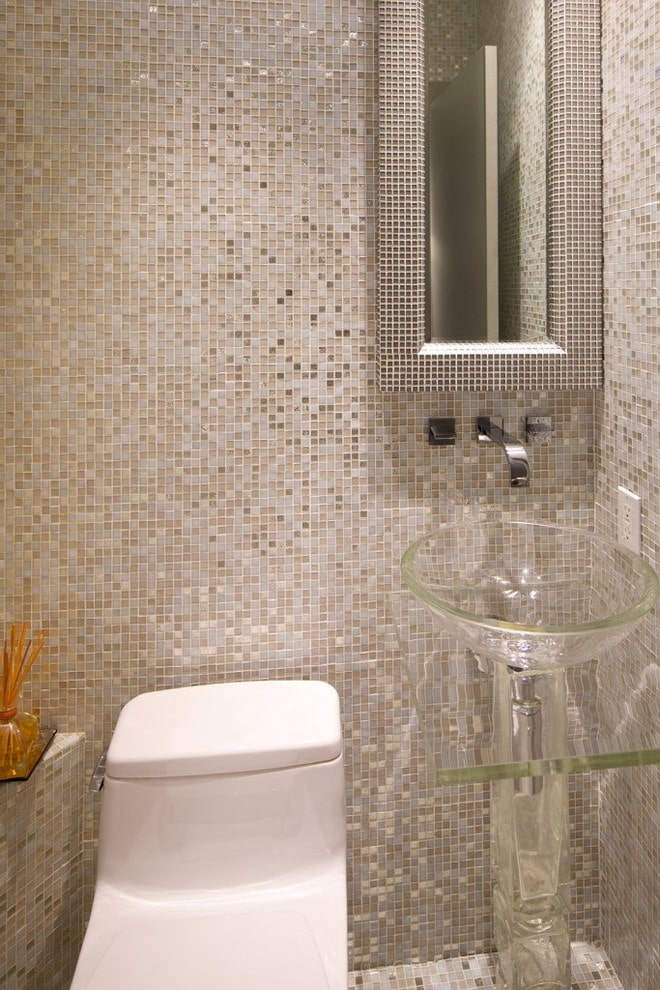
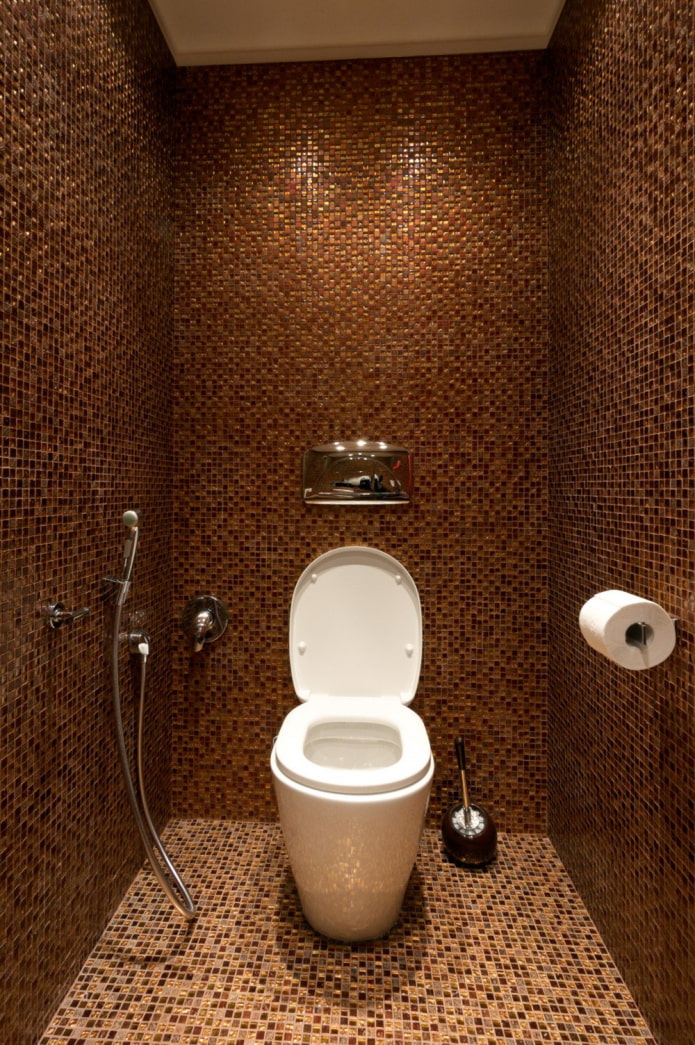
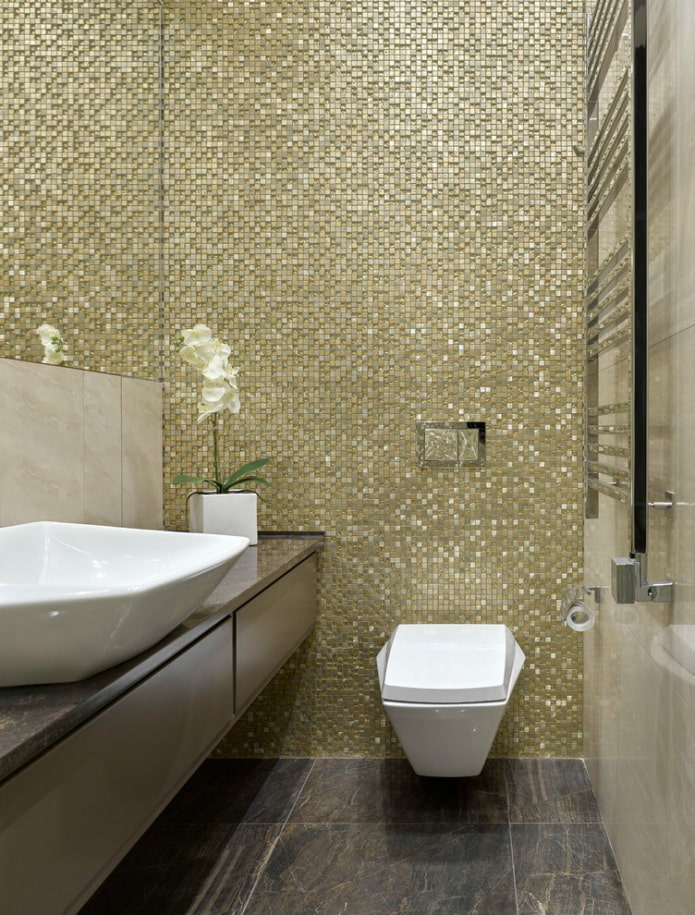
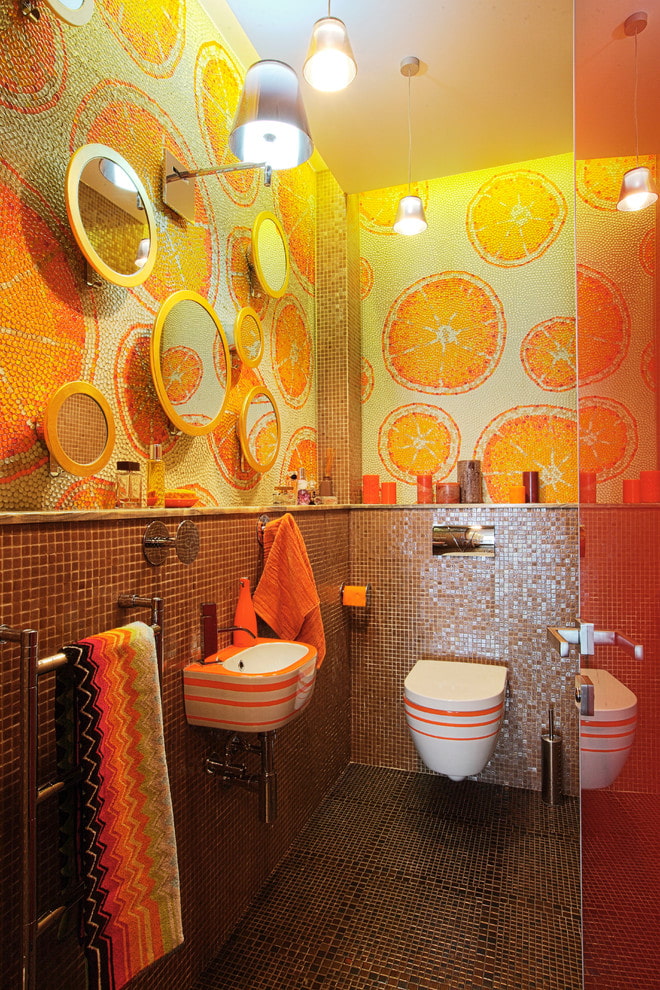
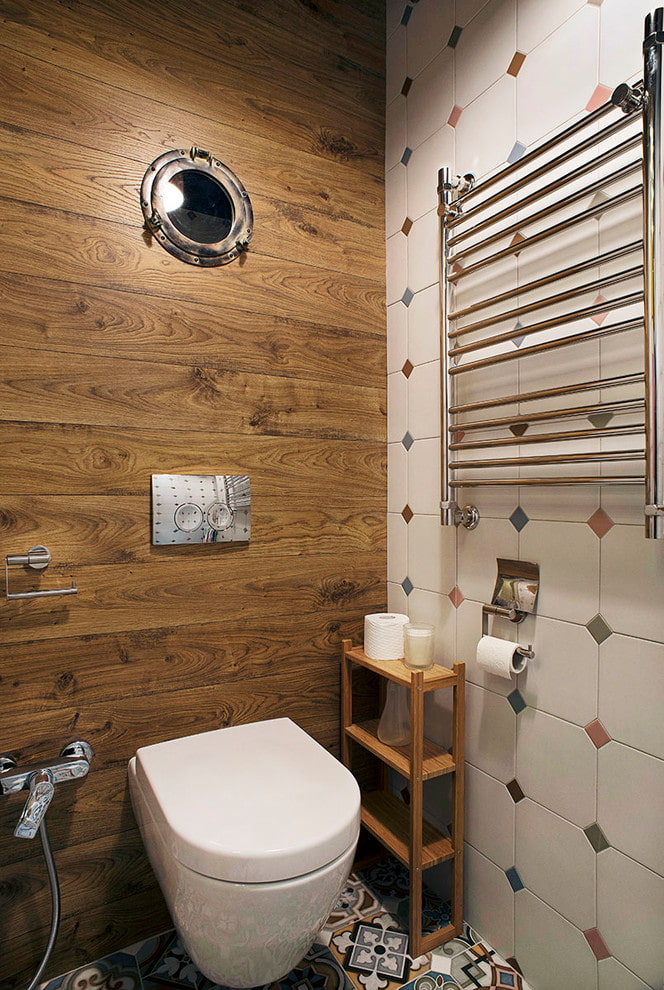
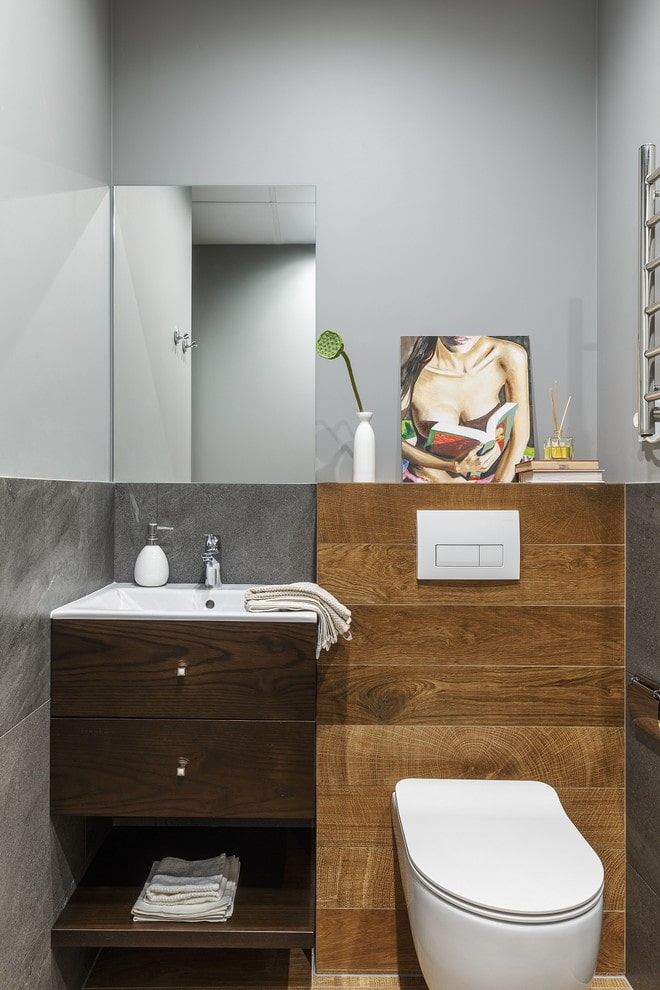
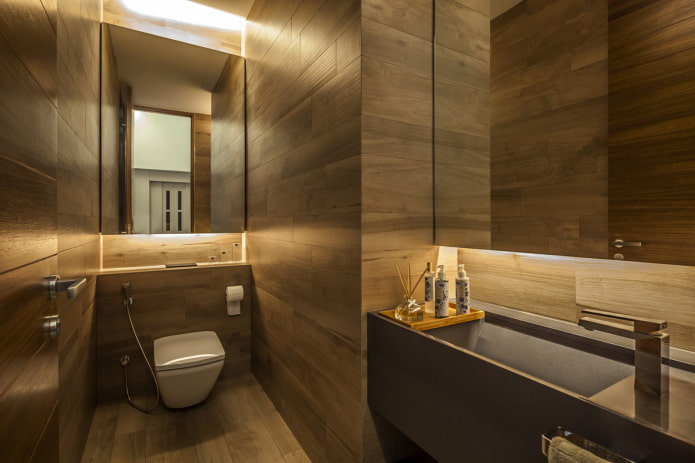
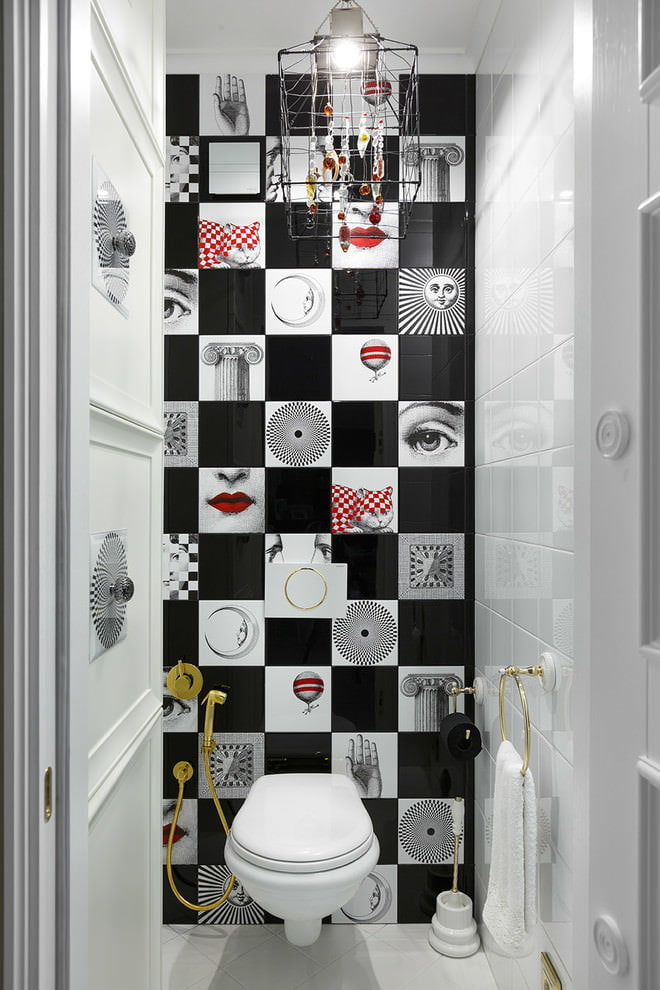
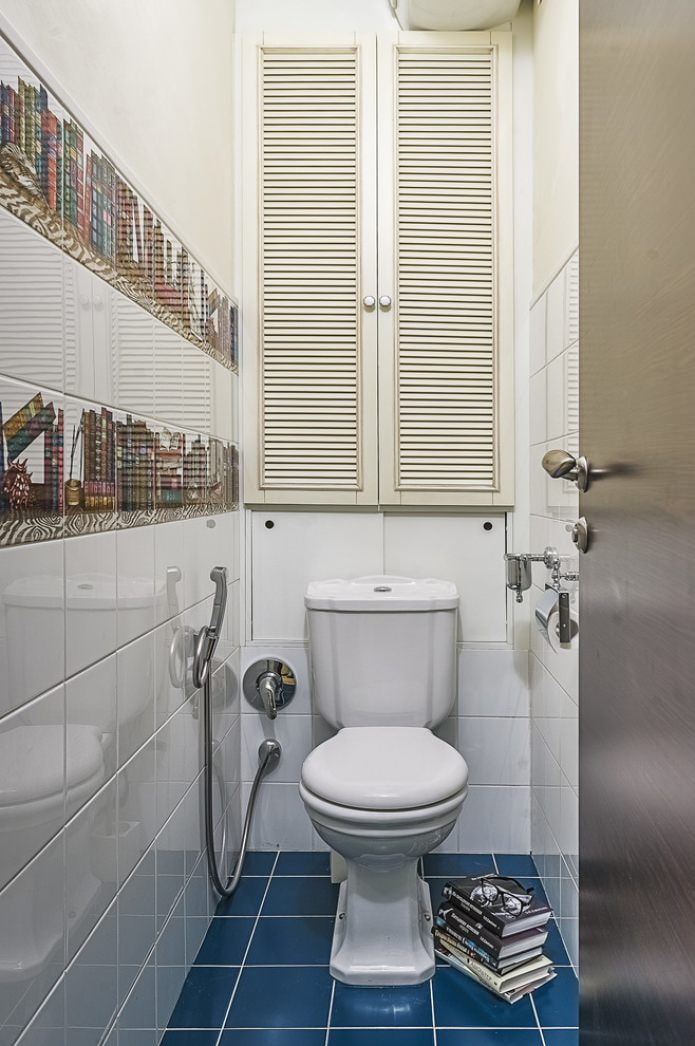
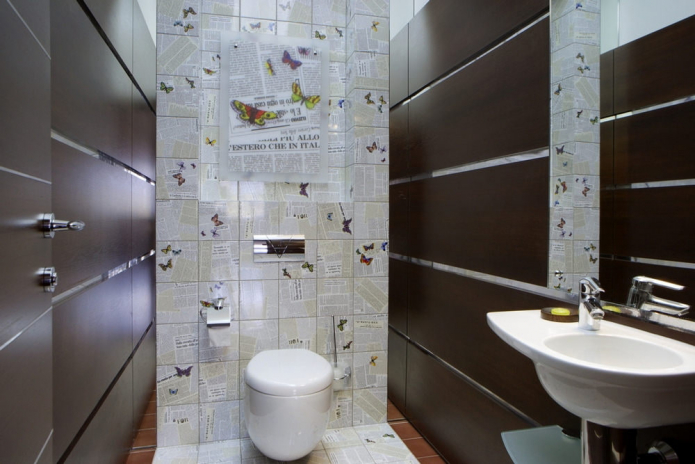
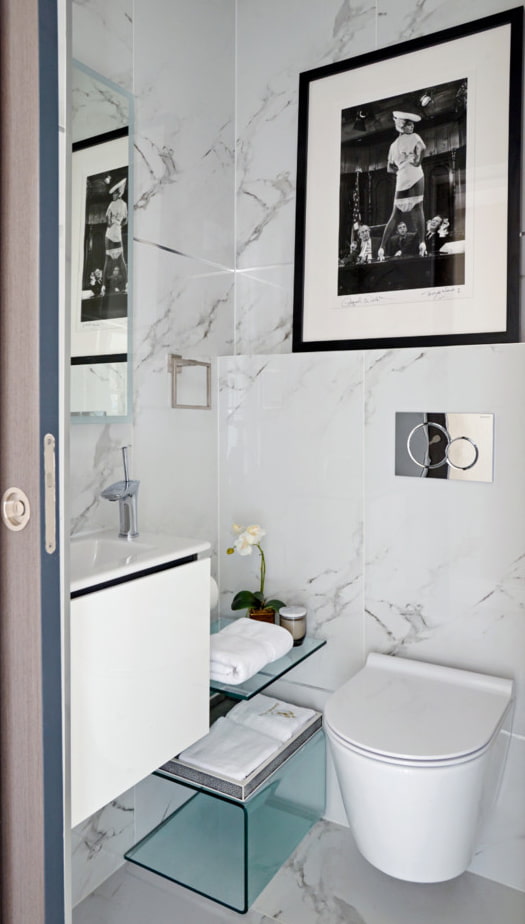
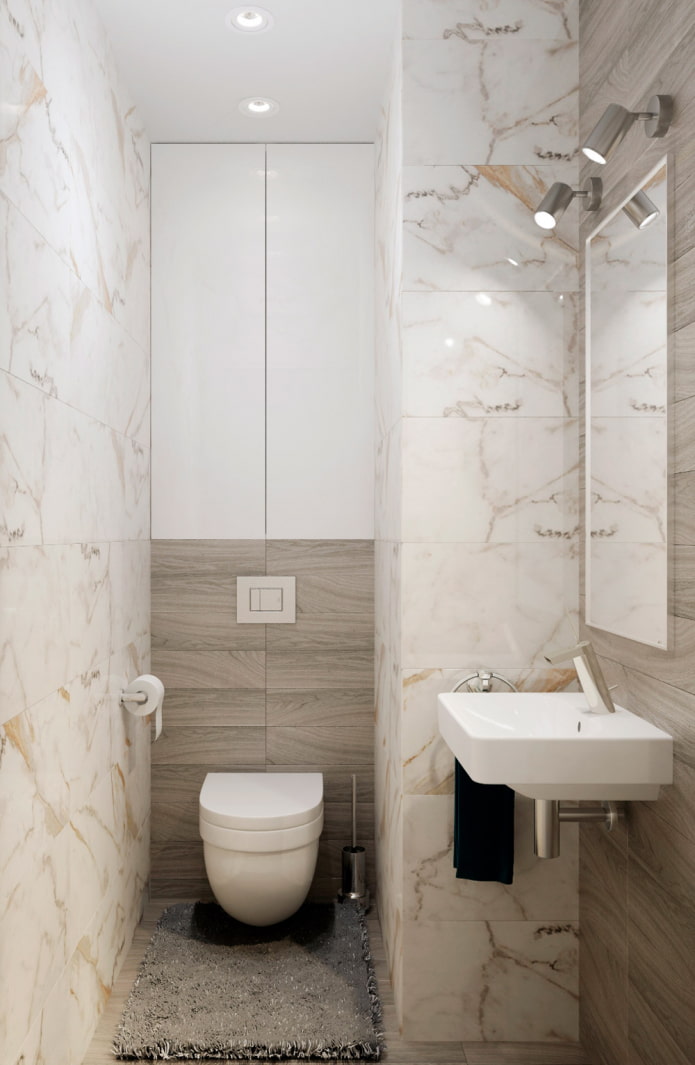
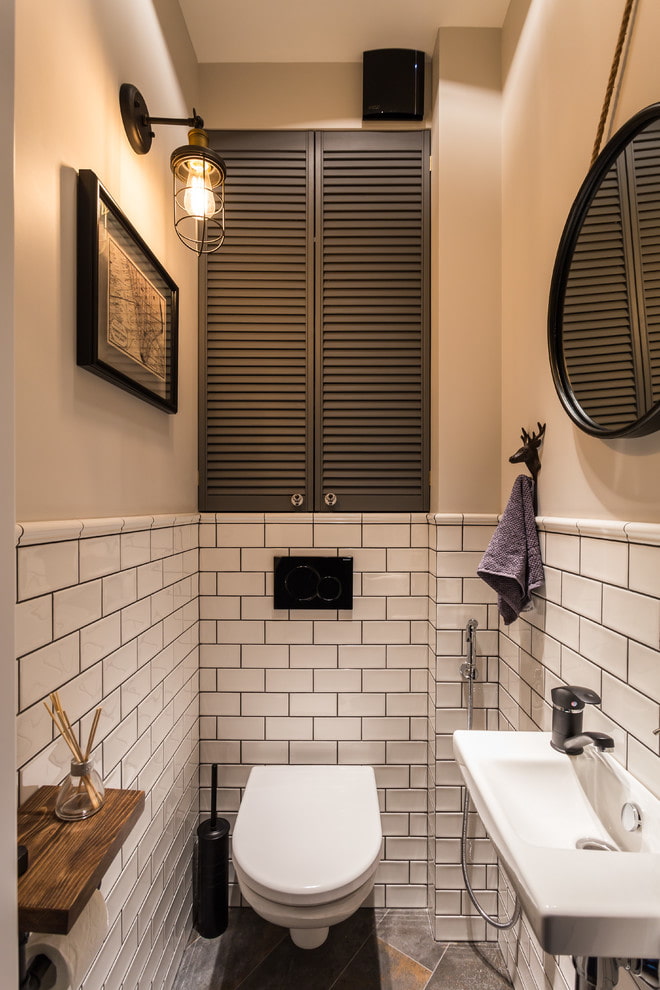
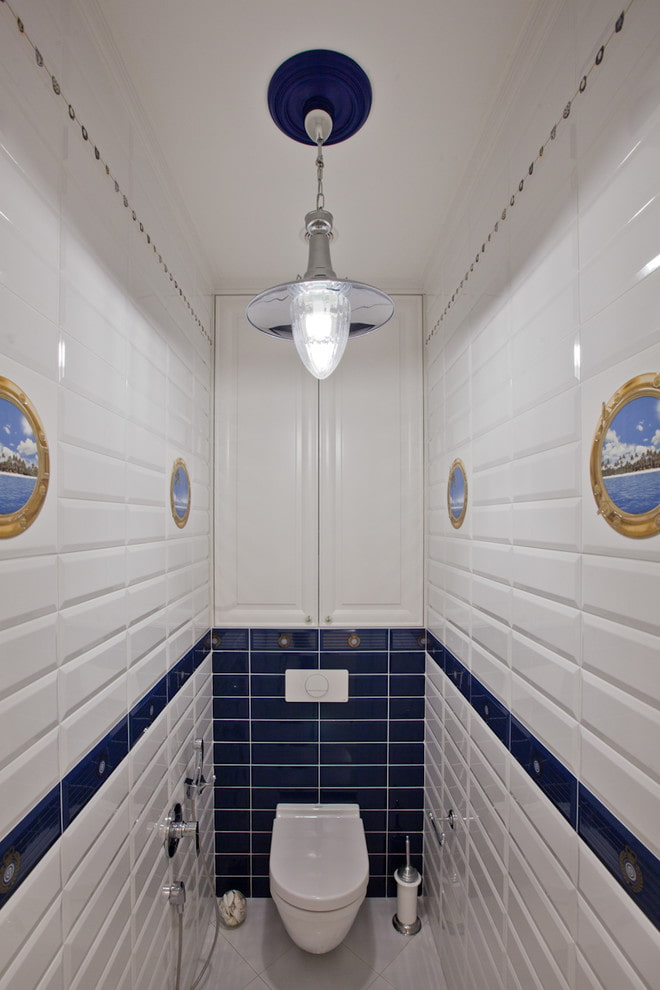
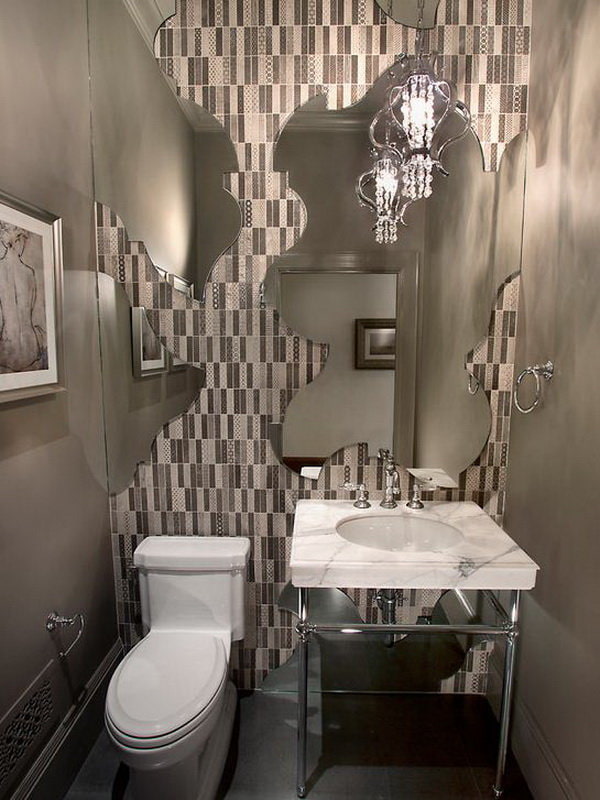
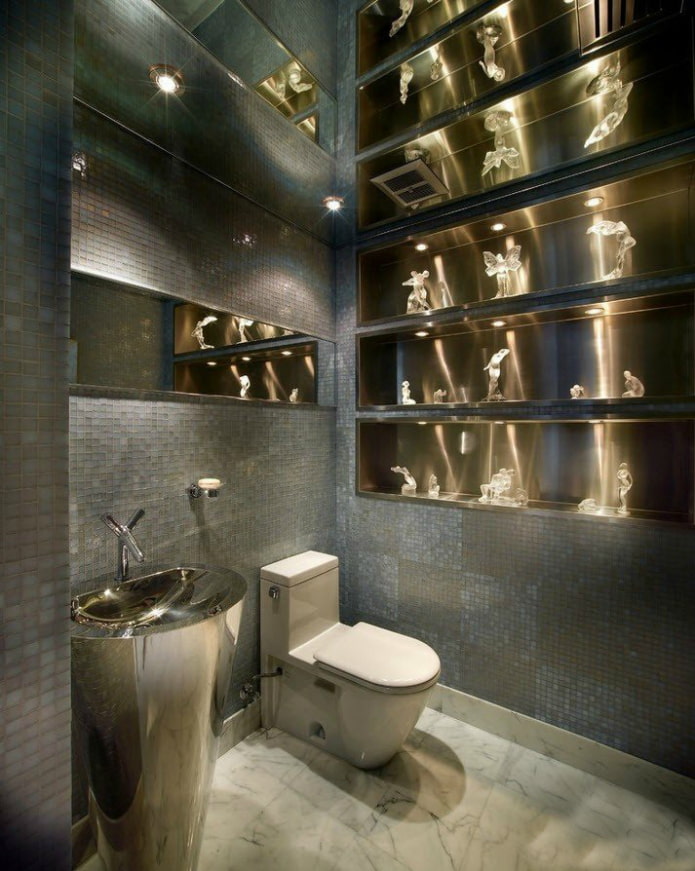

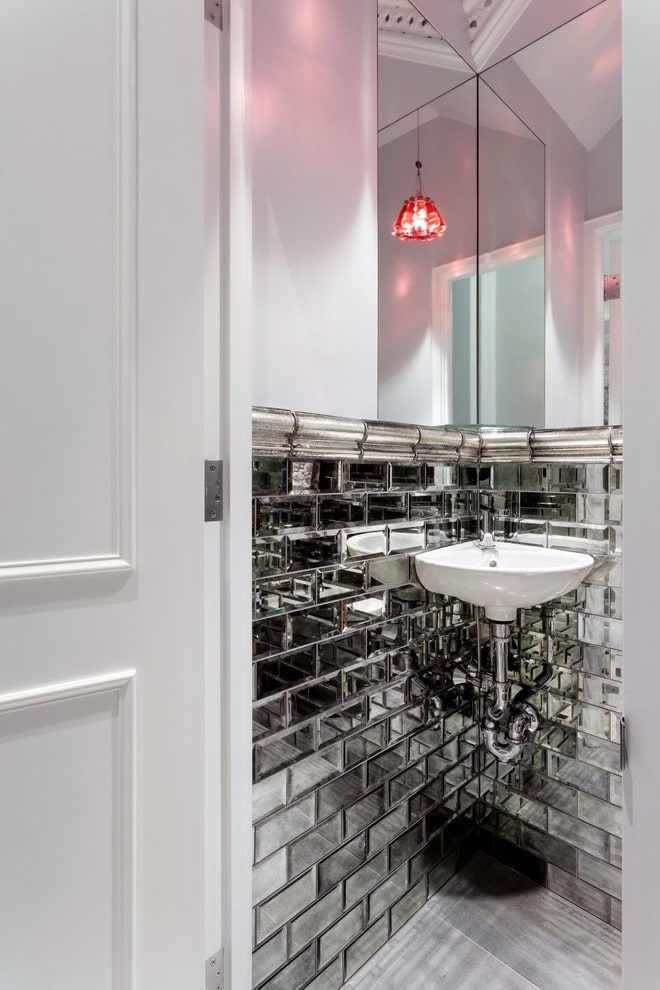
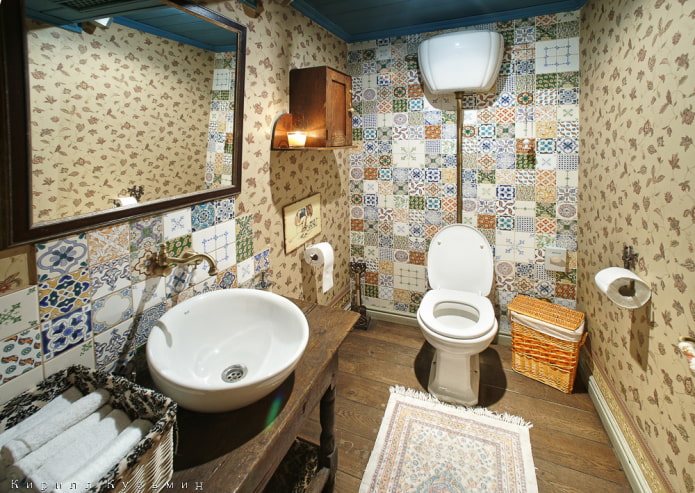

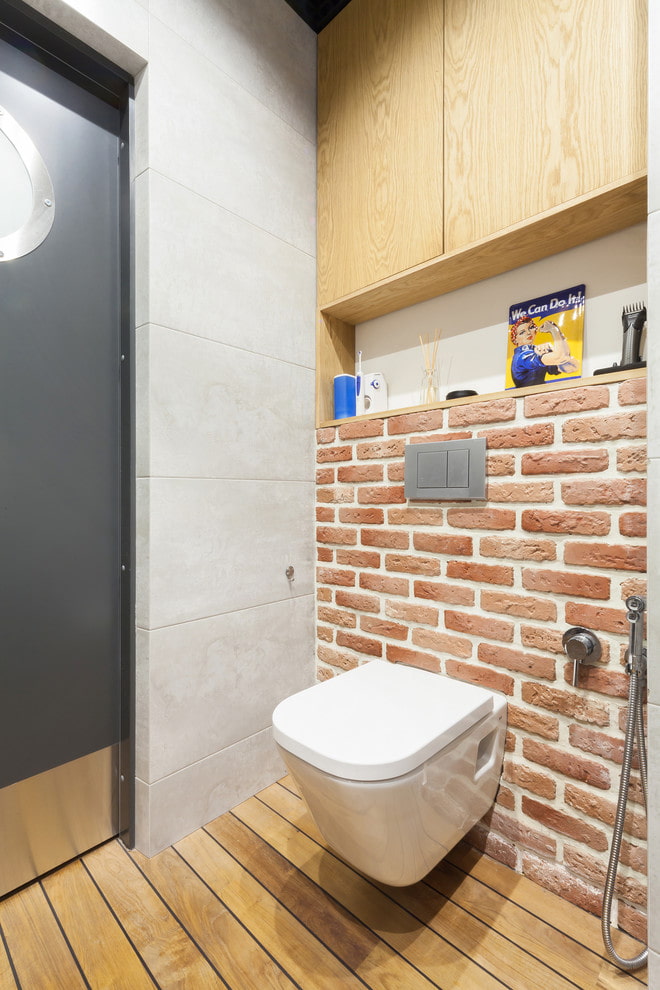

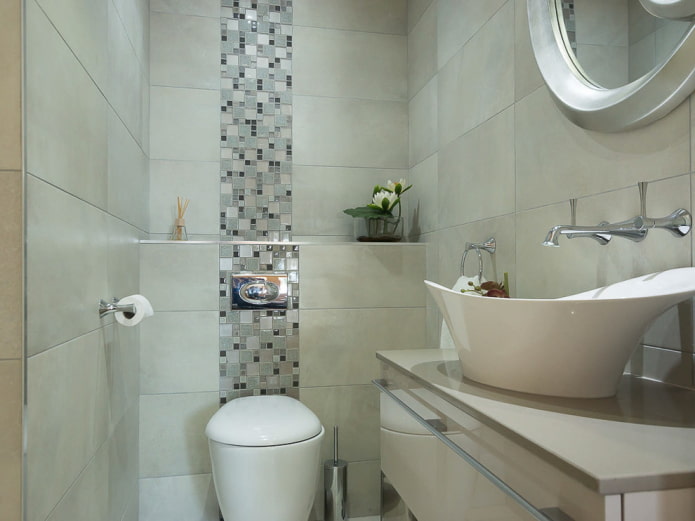
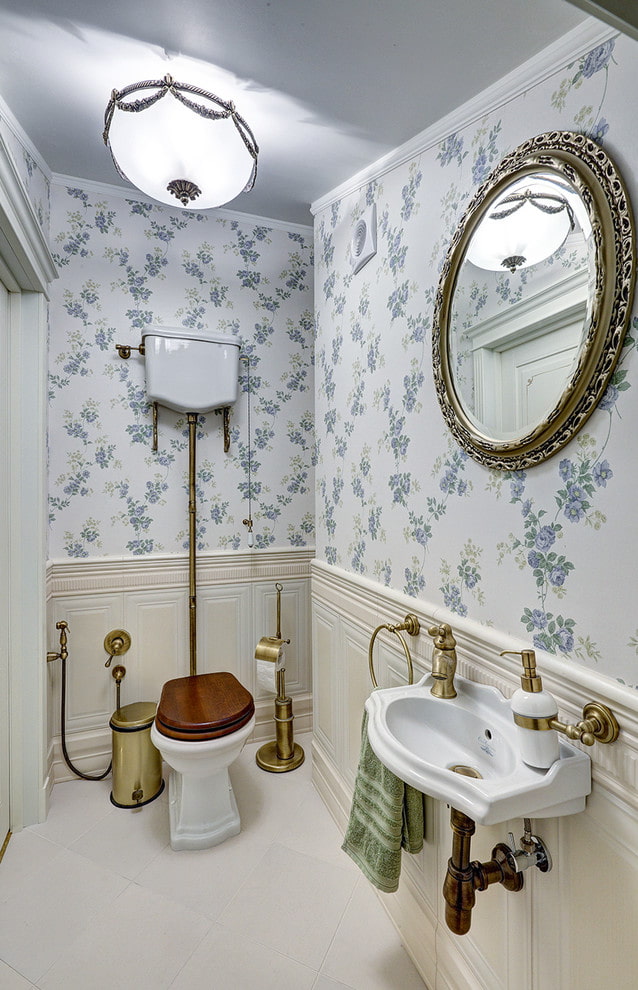
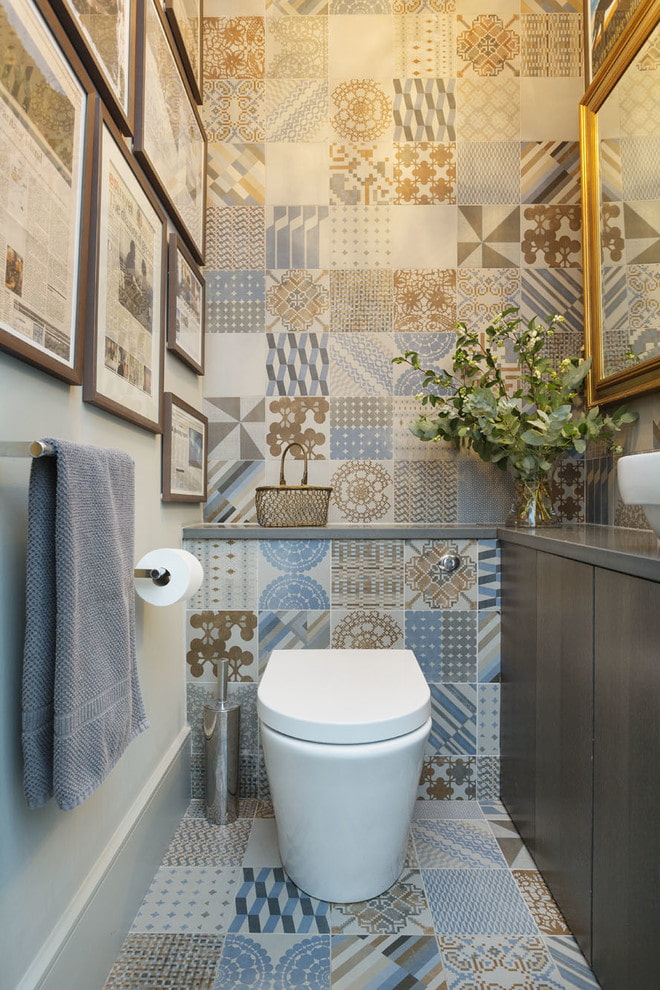
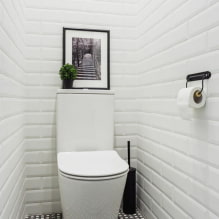
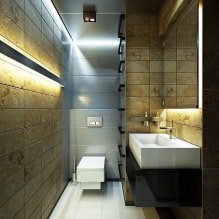
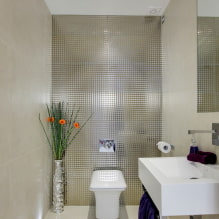
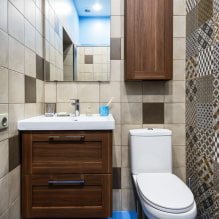
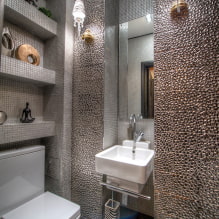
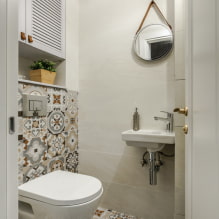
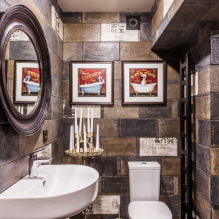

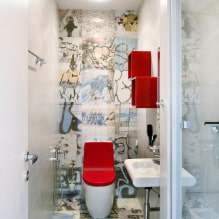
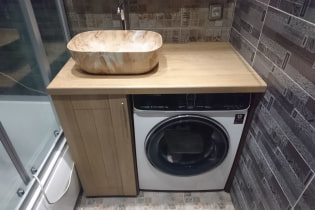 How to position the washing machine in a small bathroom?
How to position the washing machine in a small bathroom?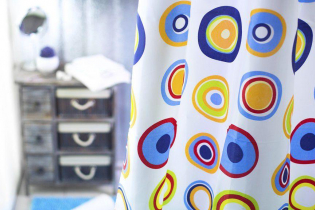 How to remove plaque from the bathroom curtain?
How to remove plaque from the bathroom curtain?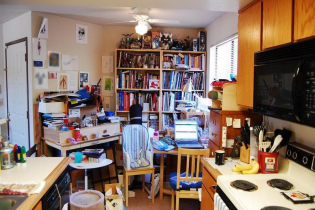 7 common mistakes in small apartment renovation that eat up all the space
7 common mistakes in small apartment renovation that eat up all the space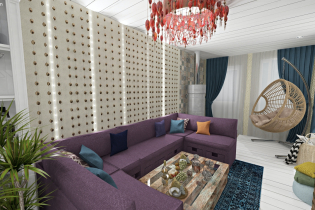 Apartment layout: how not to be mistaken?
Apartment layout: how not to be mistaken?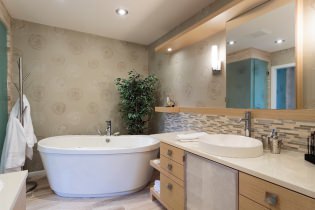 Wallpaper for the bathroom: pros and cons, types, design, 70 photos in the interior
Wallpaper for the bathroom: pros and cons, types, design, 70 photos in the interior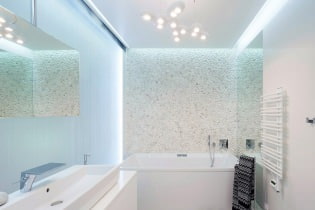 Modern bathroom interior: 60 best photos and design ideas
Modern bathroom interior: 60 best photos and design ideas